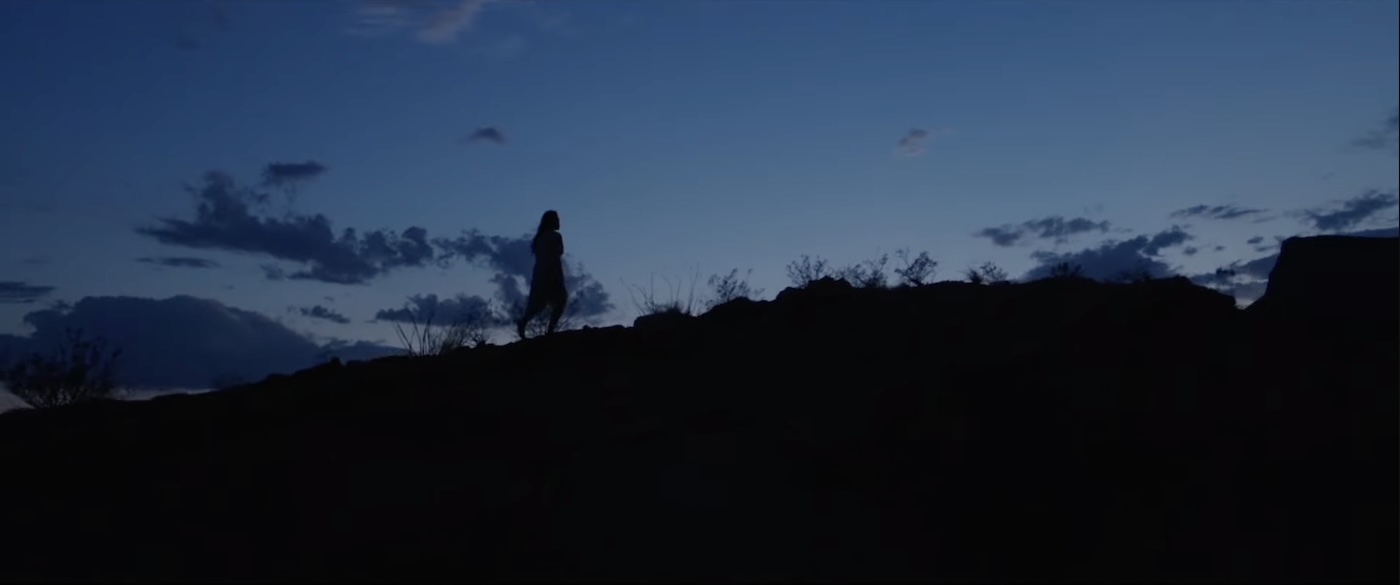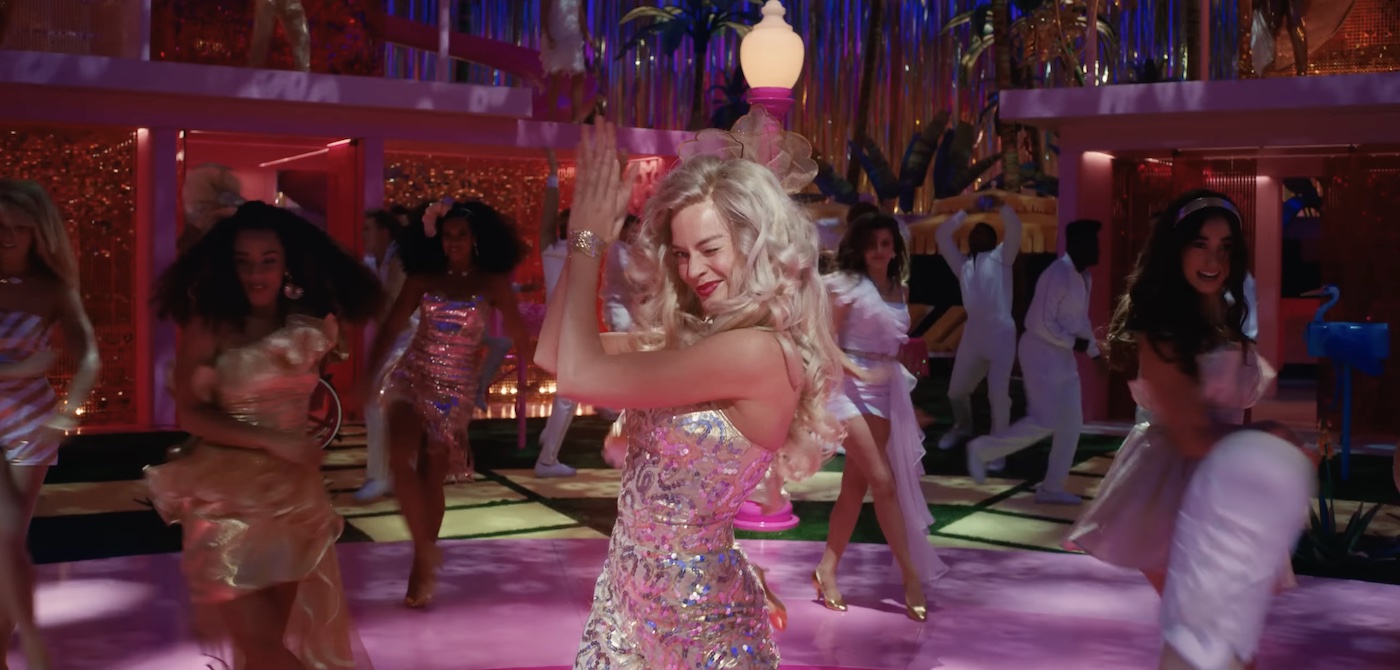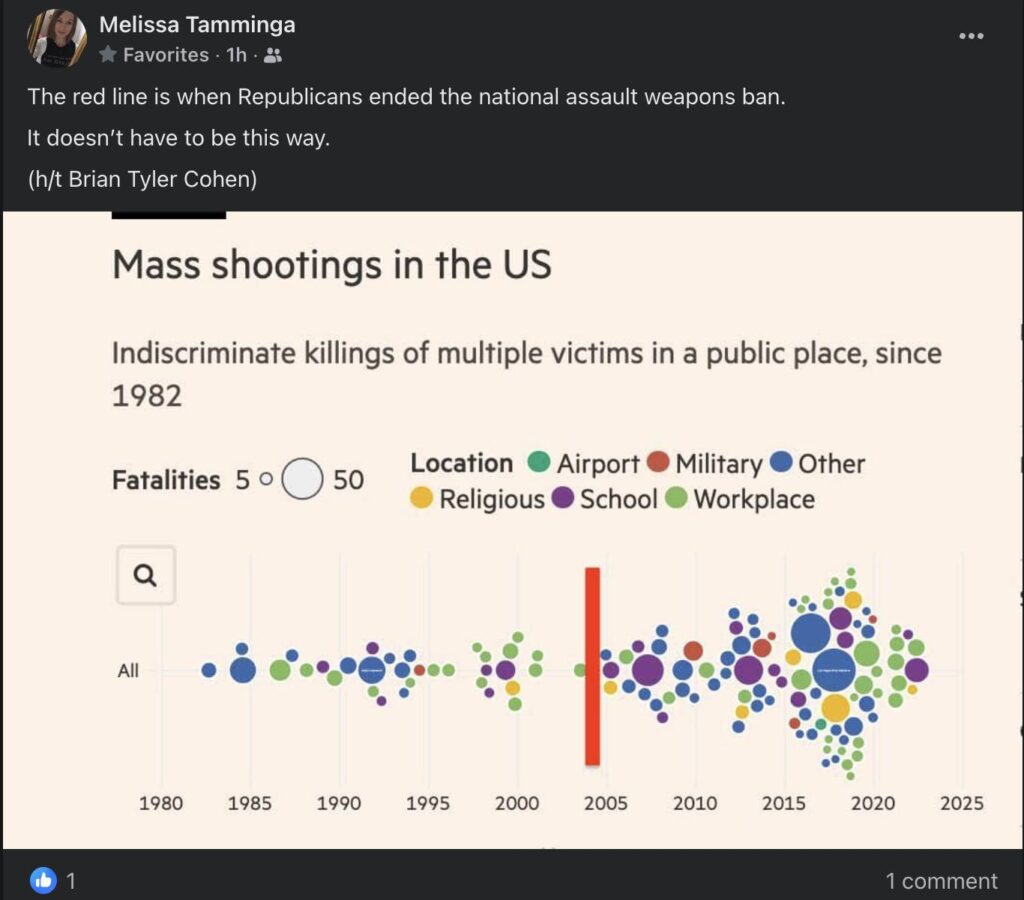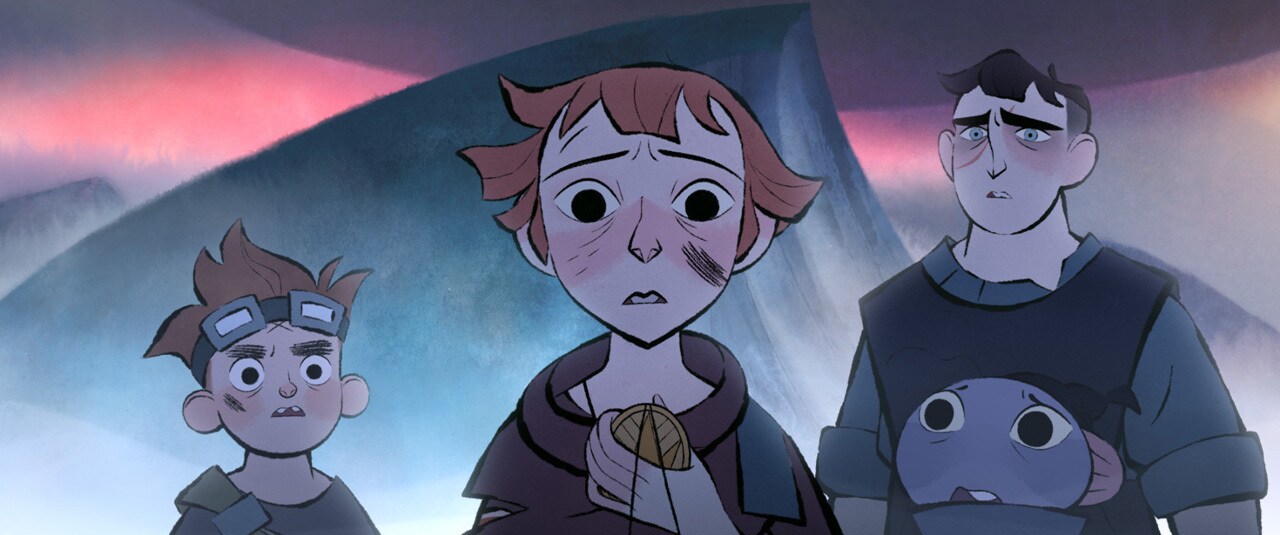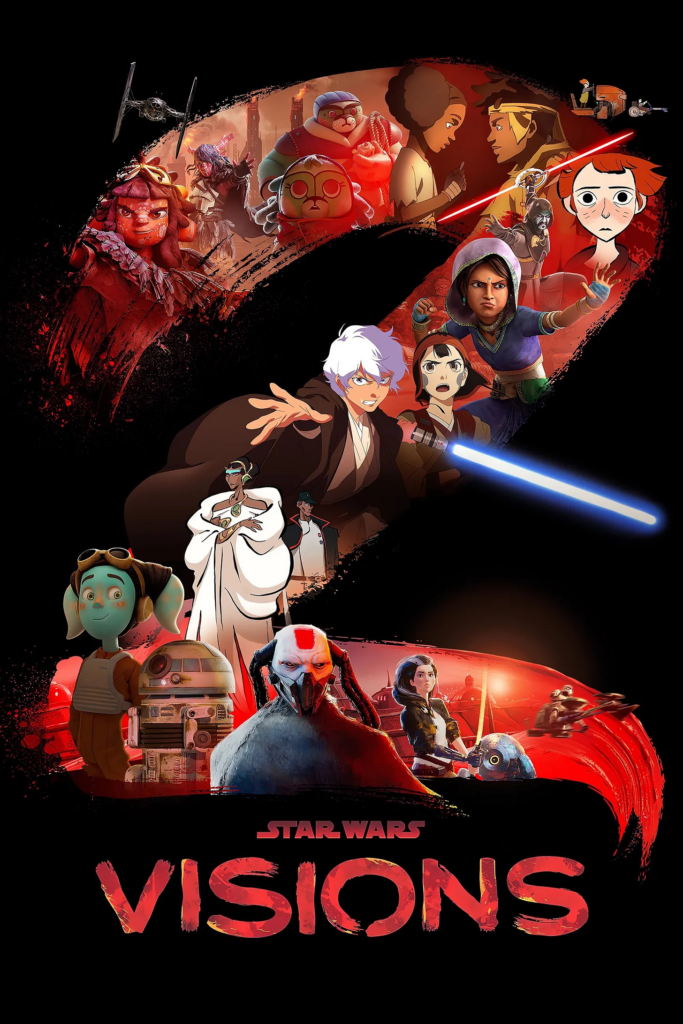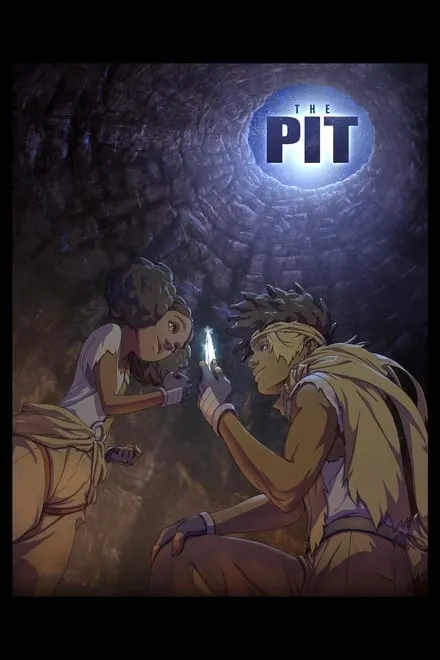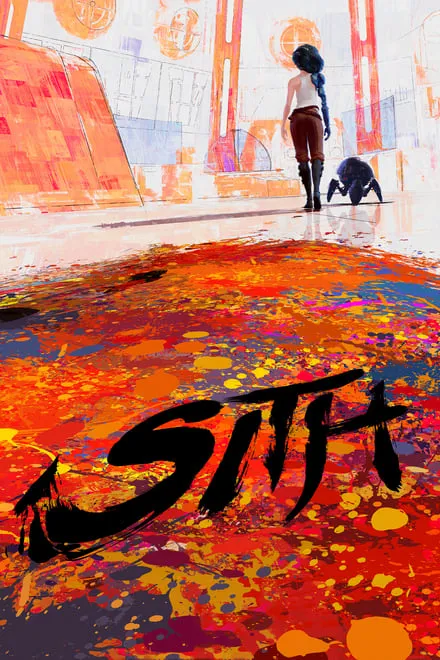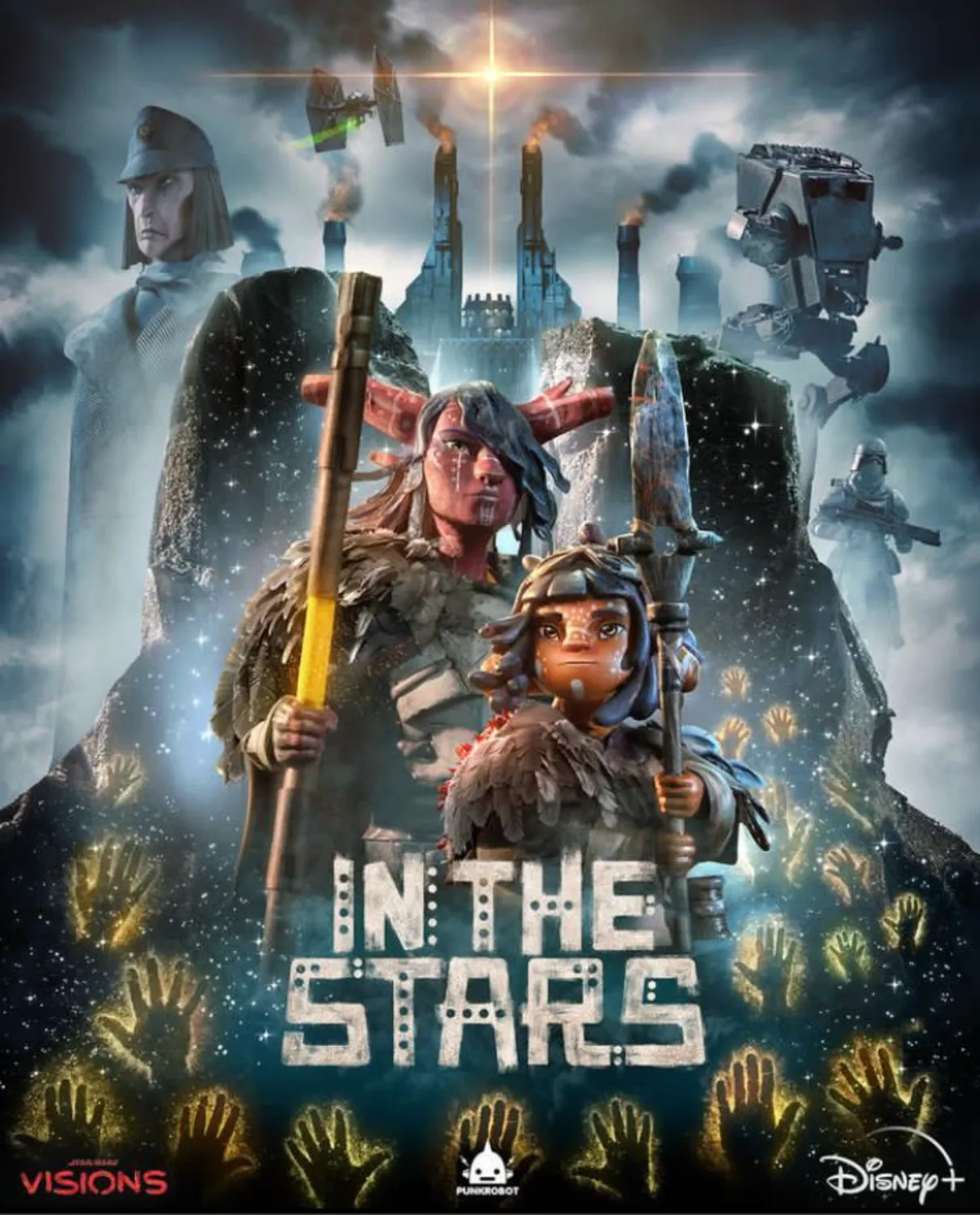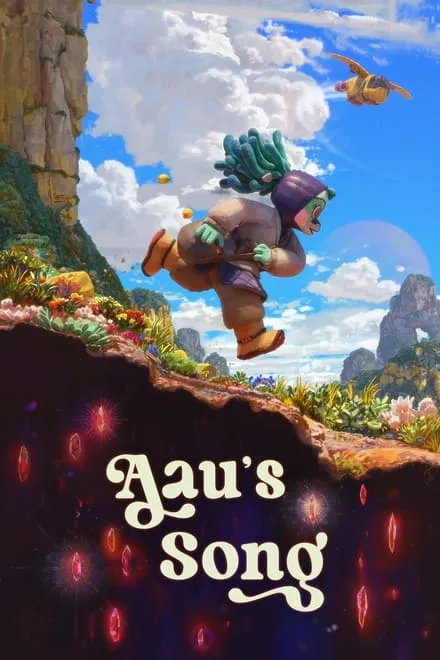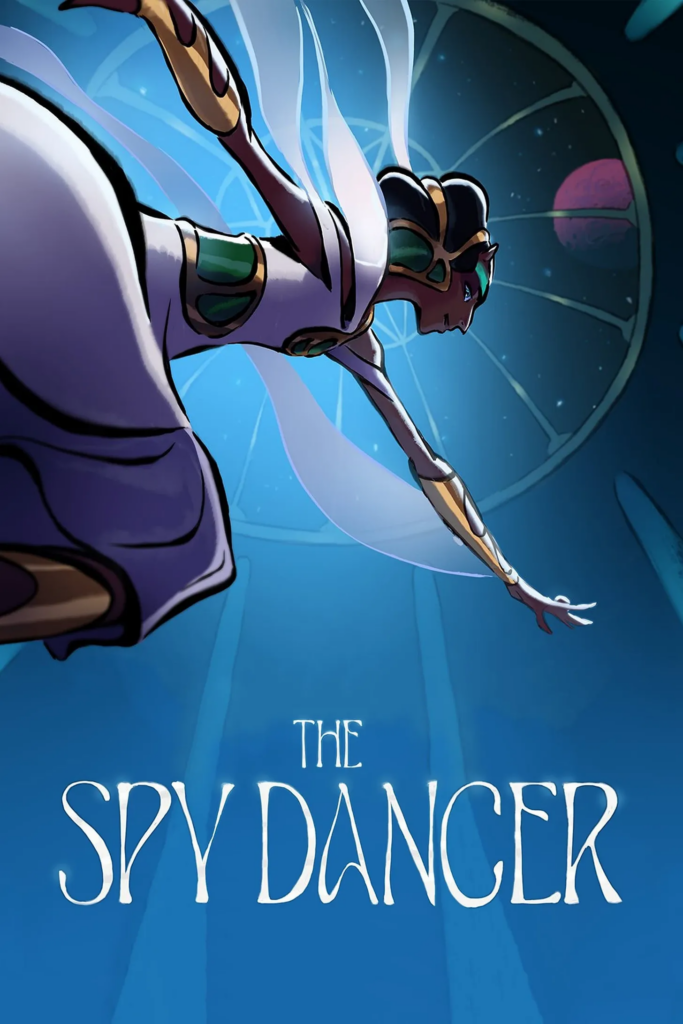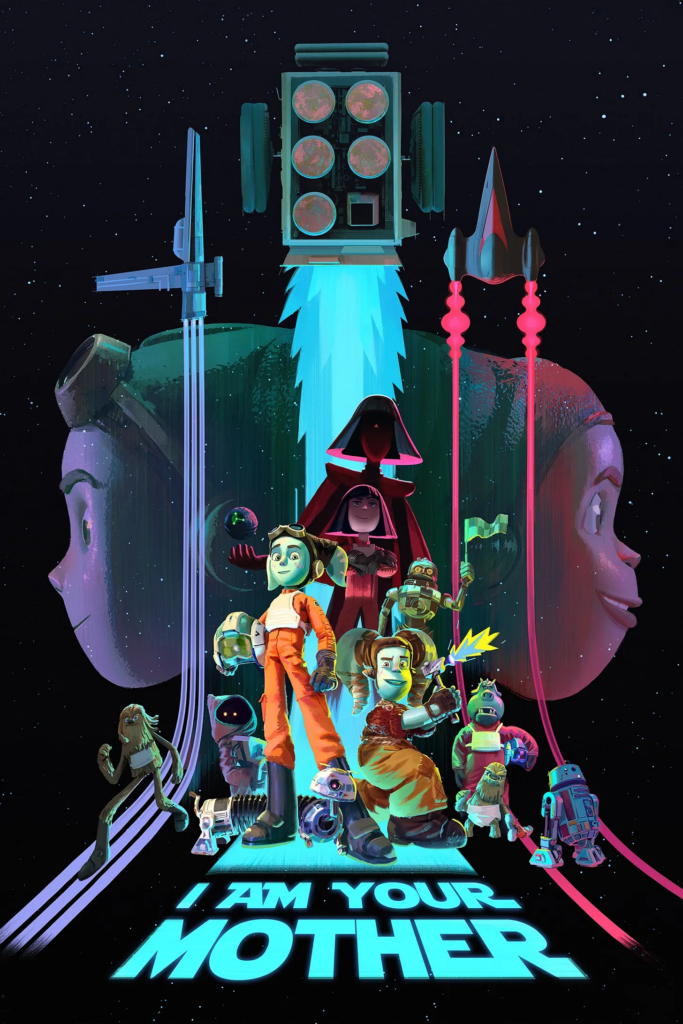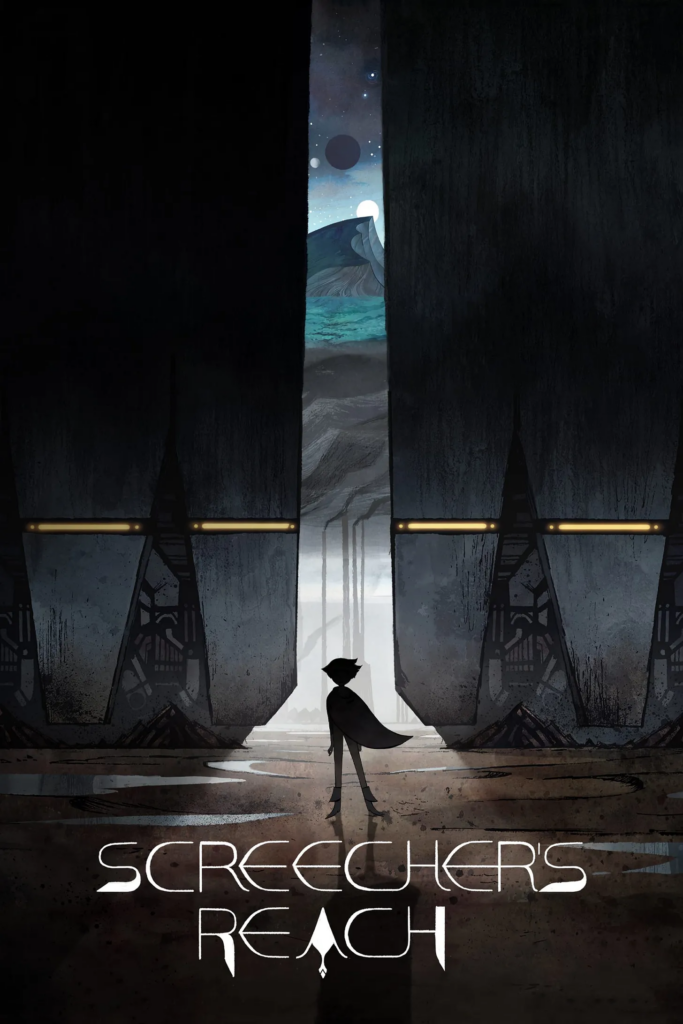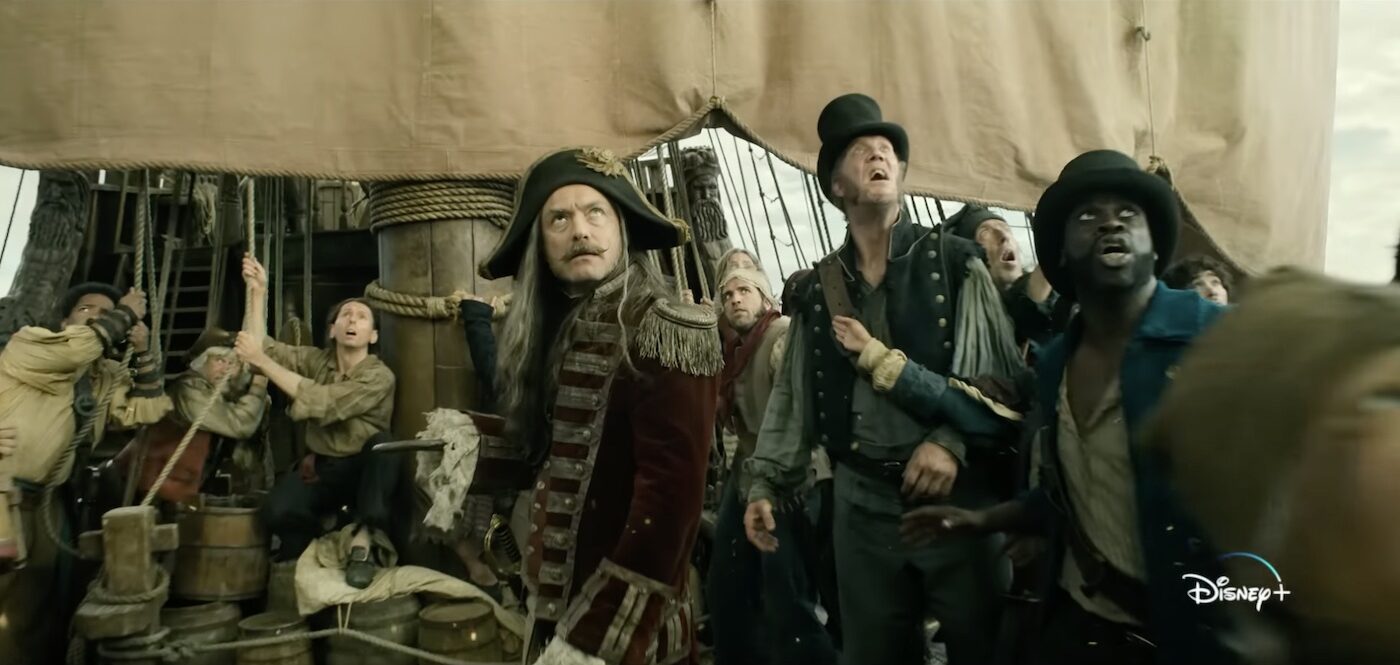Lily Gladstone goes soul-searching in The Unknown Country
An early draft of this review was originally published on August 21, 2023,
at Give Me Some Light on Substack, months before it appeared here.
Subscribe, and you'll read many of these reviews while the films are still breaking news!
Caution: Avoid the trailer for The Unknown Country. I'm so grateful I didn't see it before I saw the movie. It's basically a highlight reel of most of the movie's best shots. And I can tell you from experience, those images are best discovered in their intended context.
As the ticket-scanner at SIFF’s Uptown Cinemas checks my ticket for the 4:45 screening of The Unknown Country, he says, "Do you realize that if you come right back for the evening showing, you’ll get to see writer-director Morissa Waltz, the lead actress Lily Gladstone, and the co-writer Vanara Taing for an in-person Q&A?"
Oh.
"No," I said. "No, I didn’t know."
And then I added, "And I have plans later, alas. So I guess I'm missing out."
But what I really wanted to say was, "And as I cannot come back later... thank you for spoiling my afternoon!"
Dang. Dang dang dang dang. That was a five-dang bummer.
And yet I'm glad to report that my afternoon was not completely spoiled. The Unknown Country was not only worth seeing on its own, without the after-movie in-person experience, but I'm pretty sure it's going to rate highly on my list of favorite films for 2023.

Don't get me wrong: I feel the sting of missing out on that Q&A. I would have had so many questions. And I would have wanted to thank all three artists for giving me one of the most human and heartening experiences I’ve had at the movies all year.
Once in a while, a film comes along that shows you just how your lifetime of moviegoing has conditioned your imagination to anticipate only certain kinds of stories. The Unknown Country is one of those rare and nourishing experiences that stubbornly refuses to conform to any of those formulas, quietly expanding what we understand to be possible. In a sense, I did not need to “suspend my disbelief” during this film because there was no disbelief to suspend. This world, these characters, these scenarios — don't tell me they aren't happening.
If I provide any sketch of this movie’s narrative, I might give you the wrong impression. Yes, things happen in The Unknown Country — it’s an episodic road movie in which the traveler reveals a little more about herself at each of the major stops, in each of her encounters, even as she leaves some key questions unanswered. Tana comes from an Oglala Lakota family, but she hasn’t been a part of their South Dakota reservation roots or their family traditions for eight years, and it’s obvious to us right away that the journey back into that context for the wedding of her cousin, Lainey Bearkiller Shangreaux, is complicated for psychological and emotional reasons we may guess at, but the movie doesn’t fill in those blanks for us. There, she will receive a gift that serves as a sort of compass for the next stretch of her journey, which takes her south through Texas. She is clearly grieving some kind of loss. While most film critics are spelling out the details of that loss in their reviews, I’d argue it’s better to receive those details in Tana’s own time.

But you might enjoy the movie more if you know that there is no shocking twist, no big-scene revelation. We’re not being set up.
This movie isn’t really about a sequence of events so much as it is about spending time on the road with a quietly beautiful and solitary young woman whose heart is warm but broken. Tana has invested herself for years in support of someone else, and now she is moving through a difficult and emotional season of transition.
It’s also about the similarly complicated supporting characters Tana meets along the way, each one of whom is interesting enough to be the focus of a separate film. Director Morrisa Waltz gives generous attention to — and thus, I would go so far as to argue, loves — each one of them with her camera. We’re given tangential character sketches for several of these singular personalities, each one soon to vanish in Tana’s rearview mirror. Like the individuals we met along the road in Chloé Zhao's Oscar-winning Nomadland, these characters seem surprisingly human in their idiosyncrasy and complexity. That’s because many of them — Lainey, her fiancé Devin, their daughter Jasmine, and others including a waitress, a service-station attendant, a motel owner, and a dance-hall regular named Flo — are non-professional actors playing themselves and telling us their true stories. (One is honored with an “In Memoriam” frame during the closing credits.)

Lily Gladstone is magnetic at Tana, compelling our attention by drawing us in to her watchful and meditative nature and inspiring questions about her history and hardships. I won’t be surprised if, at the end of the year, when she’s likely to become a household name on a wave of Oscar buzz for Martin Scorsese’s violent epic Killers of the Flower Moon, I’m encouraging everyone to catch her performance in this movie as well for a greater exhibition of her strengths. We’ll see.
Earlier, I said that The Unknown Country doesn't follow any familiar templates. But are there other films I would shelve on the same shelf in a video store due to some kind of cinematically similar spirit? There's a hint of the aforementioned Nomadland here, and there’s a vibe that reminds me of Terrence Malick contemplative style—and I had already written that into my notes before I saw the trailer that announces both of those connections. But it's not nearly as epic in scope as any of those films, and there's nothing calibrated for awards-season "wow" factors (which is just fine with me).
The movie that comes to mind most? Well, it's more a performance than a movie, really: As Tana, Gladstone kept reminding me of Ashley Judd as Ruby in Victor Nunez’s radiant Ruby in Paradise, the sorely underappreciated 1993 Sundance Grand Jury prize-winner. Both films have a warm-hearted authenticity that make me think Tana and Ruby might live in the same world and meet somewhere along the way.

I remember Ruby in Paradise for how it slowed me down to a point that I felt I had really come to know not only people but places, and that I could leave the theater and go find them — or find characters and worlds much like them. And it seemed a pleasing prospect.
I suspect I will remember The Unknown Country for similar reasons. It kindles my curiosity about people I encounter only briefly in seemingly incidental stops along the way. It makes every encounter along the road seem like an opportunity to “love my neighbor,” establish a new friendship, learn a new story. Such encounters can enrich the traveler with a stronger understanding of the world they’re a part of, with a deeper knowledge of history, with gifts that will alter the journey ahead, and, sometimes, with surprising moments of self-discovery.
Barbie, Pt. 3: My full review!
My full review of Barbie is now published at Give Me Some Light, bringing a conclusion to my three-part series on Greta Gerwig's summer blockbuster.
Subscribers who have contributed — either a little or a lot — to help cover costs of my film reviewing have full access. Later in the year, I'll republish the full review here.
Killers of My Substack Journal: New films by Scorsese and Fincher
Killers, killers, everywhere we look. War in Ukraine and Russia, in Gaza and Israel, an ongoing slow-motion war in America of white supremacists and Christian Nationalists against brown and black bodies. Those are battlefields in which individuals have blood on their hands, but their violence is inspired, influenced, and enabled by systemic corruption.
And there's another American battlefield on which everyone is losing with no sign of relief: Men we have failed by providing insufficient mental health care are lashing out with violence, using the weapons of war we hand over to them to commit mass killings. It's enough to make you wonder: Gee... what in the world might we do to change this?
I have a suggestion: Look at this graphic and vote carefully. (Post by film critic Melissa Tamminga used with permission.)
In order to understand such any of these horrific trends of violence and address them with wisdom and conscience, we need great art about violence to help us see more clearly.
Looking for my review of Martin Scorsese's Killers of the Flower Moon? I've posted a substantial essay offering some first impressions at Give Me Some Light, my Substack journal. (Everyone can read the opening paragraphs, but the full review is available only to paid subscribers for now.)

Did you know that David Fincher — director of Seven, Fight Club, The Curious Case of Benjamin Button, Zodiac, and Gone Girl — has new film in theaters right now for a very limited time?
If you're content to wait for a streaming option, The Killer will be on Netflix before you can announce "The return of Michael Fassbender!" I didn't wait. I went straight to the theater, and I've posted a first-impressions review at Give Me Some Light. This one is free for all to read.

Barbie, Pt. 2: Action figures, their accessories, and me
An early draft of this review was originally published on August 7, 2023,
at Give Me Some Light on Substack, months before it appeared here.
Subscribe, and you'll read many of these reviews while the films are still breaking news!
In Part One of my Barbie coverage, I began by listening to others’ perspectives on the movie — specifically, to women I admire.
And now, as prologue to my review of Greta Gerwig’s Barbie, here’s some context:
I did not play with Barbies as a kid.
Surprise! In the culture that conditioned me, some toys were for boys and some toys were for girls. And so it was as unthinkable for me to reach for a Barbie doll, or even to stop and look at one in the store, as it would have been for me to walk into a pet store and consider buying iguana food. (I had a rabbit.)
But then, I was an unconventional kid: Most of the toys made for boys didn’t interest me either. I was more interested in books, in drawing, in making things than in posing plastic soldiers in scenes of combat. The green-and-yellow Crayola brand got my attention; the camo-style of G.I. Joe did not. And, by the grace of God, my parents were happy with this. My favorite toy was the typewriter. My compulsions were more about creating than playing with what others had made. I wanted to fill pages with words that I could read to myself and my parents. And I wanted a tape recorder for capturing my narration of those stories, complete with sound effects and background music (from my grandfather’s classical record collection). If I coveted the Sesame Street-branded hand puppets that I found at my friends’ house — and believe me, I did — it was because I wanted to bring them to life, give them voices, and put on a show for an audience, not so I could treat them as dress-up collectibles.

I seem to remember playing with action figures for the first time at around the age of five. The Fisher-Price Adventure People were presented as characters for storytelling. On the back of each box, a comic of several frames dramatized adventures that were possible with each set. With the Wild Safari set, a family took a car, a trailer, and a cage out into the wild (the outback, I assume?) to capture animals — a giraffe, a gorilla, a lion, a tiger—load them into cages, and haul them off to… what? Sell them to circuses? Keep them in a zoo? (These possibilities worried me. I thought it was more interesting to have them rescue the animals from captivity and return them to the wild. Or what if the animals escaped this cruelty and attacked their captors?)

My favorite Adventure People were the Aero Marine team: a helicopter pilot and a frogman in a blue wet suit. The pilot’s helicopter would lift and carry the frogman’s one-person submarine, which had big red pincers for retrieving items from the ocean floor, including a treasure chest loaded with gold — included in the set! The purpose of these toys was clear: Adventure! Imagine these characters working together to make discoveries and achieve exciting things! I never gave any thought to what these characters would shop for, or what accessories might make them more attractive to potential romantic partners. They came dressed appropriately for usefulness.
Barbies, by contrast, made no sense to me—even though they were everywhere. They lined the toy shelves in department stories. Commercials for Barbie were ubiquitous. (I have no memory of commercials for the Adventure People.) Girls at school played with Barbies and ate lunch from Barbie-branded lunch boxes. Broken pieces of Barbies would show up like crime-scene evidence on playgrounds and alongside roads in my neighborhood. “Weird Barbies” with badly scissored hair and smudged Crayola makeup lurked like monsters in the depths of toyboxes I rummaged through in the homes of my parents’ friends. I don’t remember my mother having any interest in or history of playing with Barbie dolls — and I’m grateful for that.
Everything changed, though, when Star Wars action figures arrived two years later. While these characters came with a pre-conceived context of good-guy rebels fighting bad-guy stormtroopers and dangerous alien monsters, they inspired my interest in accessorizing toys. And in the Star Wars universe, only one accessory really mattered: weapons. Guns for gunslingers. Lightsabers for Jedi. Starships with cannons. These toys came with an assumption that violence was their primary function, violence for good or for evil. (I don’t remember any commercials advertising what the actual story of Star Wars teaches us: that a mature and admirable Jedi Knight will cast his weapon aside rather than strike his enemy in anger.)
Barbie, as far as I could tell, may have dressed for various jobs and functions, but did she ever do anything? She seemed to exist for fashion accessories. She was, above all, an icon of capitalism, an enthusiastic consumer whose boyfriend was as superfluous as her hair pins. She existed for girls, yes, but seemed to be training girls in what an ideal woman should look like and dress like in order to be desired. We were not encouraged to ask about who was defining “ideal” and why.

And that should come as no surprise. Barbie, according to Susan A. Fletcher’s book Exploring the History of Childhood and Play Through 50 Historic Treasures (Rowan and Littlefield, 2020), was inspired by Lilli, an amply-bosomed doll made as a sexual fantasy for grown men, sold at novelty stores in Germany.
(When I was challenged on this by another film critic, I looked around, and it seems this history has been well-documented. In fact, Business Insider updated this story very recently.)
Lilli was based on a cartoon by German artist Reinhard Berthein about a call girl who “accompanied men to dinner and costume parties, and occasionally went out wearing nothing more than her underwear” (Fletcher).
When Mattel-company co-owners Ruth and Elliot Handler discovered these dolls in Switzerland, she adopted and revised the idea, and named her “girl next door” version after her own daughter Barbie. (Her son, of course, was named Ken.) The Handlers discovered that they could make money by constantly introducing more and more accessories that little girls would believe Barbie needed: a wardrobe full of clothes, items necessary for different kinds of leisure, and, eventually, friends and potential romantic interests. And a house, of course. She was a way for girls to imagine themselves primarily as consumers.
And, at the same time, they conditioned many girls to focus on how they measured up (literally) to Barbie’s dimensions, and how they might make themselves up as objects of desire. Barbie, as a commodity, seemed likely to cause those playing with her to imagine themselves as commodities. In the early ’90s, when Teen Talk Barbie arrived, she kindled the fury of feminists by saying only a few things, one of which was “Math class is tough!” and another was “Let’s go shopping!” “Playing with Barbie,” Fletcher writes, “didn’t cultivate a nurturing instinct; instead, the doll taught girls about fashion and consumerism.”I encourage you to read the rest of Fletcher’s report, which tells the story of how some clever conspiracists fought against Barbie’s reinforcement of narrow and harmful gender stereotypes. It’s an eye-opening overview of how this plastic icon of womanhood has provoked controversy and important conversations about gender roles and the potential of toys for both creativity and destruction.
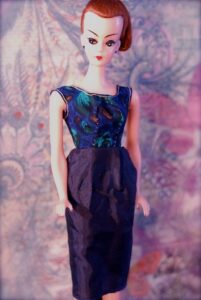
But I don’t recount this history in order to condemn or even criticize the girls who grew up with these toys. Just as many girls were seduced by the allure of the doll and what she represented, I was seduced by the not-so-subtle drive to convince boys that their value was connected to their capacity for combat. We were taught that every good male icon has his weapon of coercive violence.
Through childhood into my teens, I coveted Star Wars figures and, when I could afford them with my modest allowance, I started collecting. Looking back, I see that this was an expression of my enthusiasm for the storytelling of Star Wars and my love for the creativity of their design. But I also remember how, while I admired them and took pride in showing them off, I spent very little time actually playing with them. The fact that almost all of them were equipped with deadly weapons suggested that imaginative play should be about fighting, and that aspect of the merchandising phenomenon short-circuited my engagement with them. I loved having them lined up on my bookshelves because, like icons in a church, they reminded me of things that were important to me: heroism, sacrifice, humor. But now I wonder about how this prioritization of killing machines might have influenced my values and my politics as I grew up. And I wonder how they’ve influenced those men who invest themselves far more passionately in protecting their own right to bear arms than they do in matters of social justice for their vulnerable neighbors. They’ve bought into the lie that a “man” is someone who has a weapon and just might use it if you provoke him.
Of course, there’s a library’s worth of books to be written about how these toys reinforced false binaries too. If you were born with a body-model that didn’t align seamlessly with the rest of your complicated human chemistry set, there were no toys to represent you or to help you imagine your place in the world. You were bound to be branded as an alien, a defect. That’s a conversation for another time and place—but it’s an essential one, nevertheless.
One of the greatest ironies of toy-making that I’ve observed in adulthood is the merchandising of Peter Jackson’s Lord of the Rings movies. To promote a series about the grievous reality of wartime violence, and about heroes who are intent on humbly and sacrificially laboring to eliminate a weapon of mass destruction, the studio approved the production and sales of action figures who, like the Star Wars figures, all came equipped with weapons. What’s more, there were buttons on the backs of these figures that would trigger (literally) certain action moves, all of which were violent gestures: punches, strikes, swings. That, apparently, defined the usefulness, the function, the purpose of these characters.
I suspect that Tolkien, even though he participated in patriarchal systems, would have had trouble with this.
Me, I’ve only begun to repent of the oppressive and abusive hierarchies I’ve participated in. And I pray that my writing in both fiction and nonfiction serves to help dismantle such systems in the interest of justice and reparations.
I am grateful to say that my numerous nieces are growing up as women with strong minds, bold aspirations, and a sense of freedom from the straitjacketing gender norms that consumer culture has sought to instill in them. They don’t remind me of Barbie in any way. And that’s a good thing.
Even better, they’re bound to love Greta Gerwig’s Barbie movie for how it bravely dramatizes truths they already understand. They’re creative in nature, not merely consumers. They have higher priorities than the brand name on their accessories. Their storylines are already unfolding as the epic narratives of discovery and service. They look to me like real-world adventure people.
All of this gives me great hope for the future.
Just as I think it’s important to understand the origins of Barbie dolls and take the history of the product line as a cautionary tale of cultural poisons, I encourage you to see Greta Gerwig’s Barbie — even if, like me, you’ve never played with a Barbie in your life.
The more I think about the movie, the more I find myself reflecting on all of those toys in my childhood toybox, how they played roles in creating who I am today, and how they encouraged me to become a creator myself.
And in Part Three of my reflections on Barbie, I’ll go into detail on why I’m so delighted by the movie.
Barbie, Pt. 1: While frightened men burn dolls, Christian women rave about Barbie's wisdom
An early draft of this review was originally published on August 2, 2023,
at Give Me Some Light on Substack, months before it appeared here.
Subscribe, and you'll read many of these reviews while the films are still breaking news!
Okay, okay… here it is at last*: my first post about Greta Gerwig’s Barbie!
With enthusiasm, I’m delighted to announce that I’ve have already seen Barbie three times!
And I think it’s a very likely to land near the top of my “Favorite Films of 2023” list.
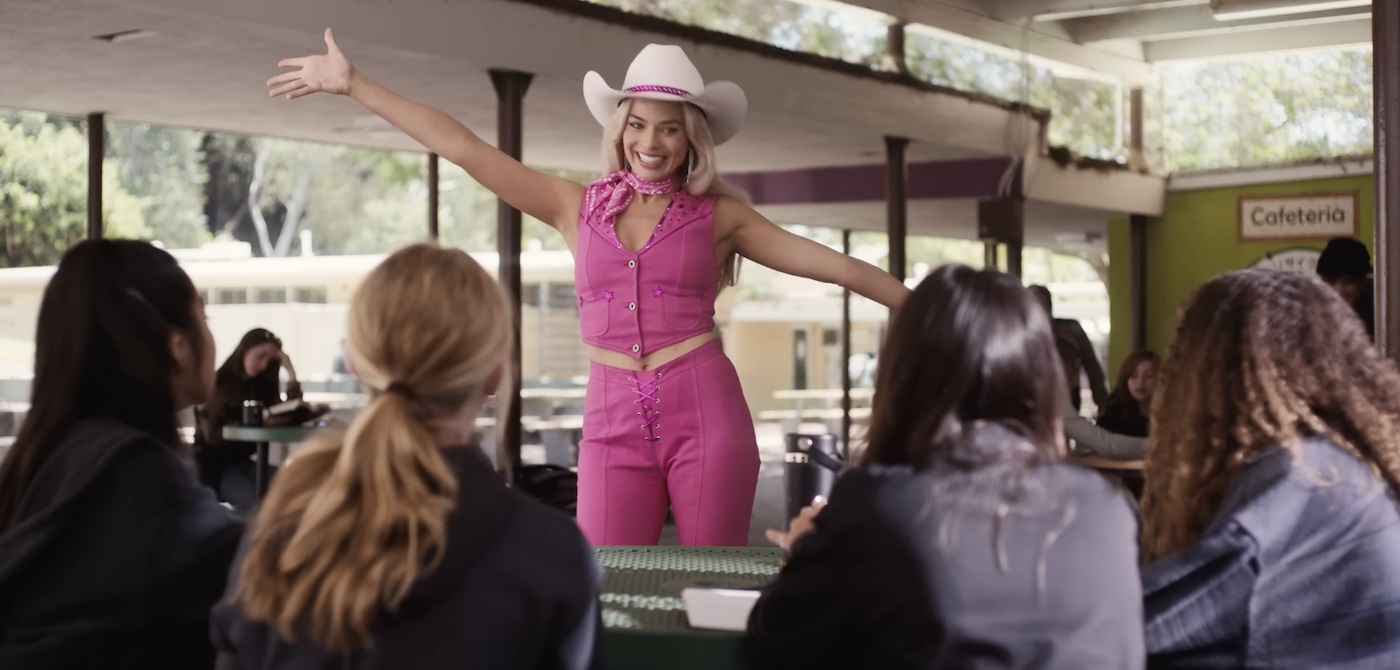
Were you hoping to hear something different?
It seems that most film critics have been nearly unanimous in singing this movie’s praises for weeks now, so this post may seem merely redundant and unnecessary. But I’m happily jumping on the bandwagon and waving a pink flag in celebration of the summer’s most popular movie.
Are you surprised that writer like me who identifies as white, male, and Christian is... pro-Barbie?
I have no doubt my review will upset and even exasperate a few readers — specifically, those with whom I share a history in conservative evangelical circles, and who remain convinced that any artist who challenges a patriarchal system is challenging “the will of God.” I’ve moved far enough beyond the borders of narrow ideologies to be able to look back and realize how myopic and ill-informed I was when I embraced such hierarchies. I’m dismayed, but not surprised, to hear voices from within those circles condemning Barbie — particularly the voices of white male conservatives who feel their claim on “God-given authority and headship” is being threatened. To try to preserve their unearned privilege, they've decided to attack the movie as a toxic influence, defending something they have self-centeredly endorsed as “a Biblical model of manhood and womanhood.” They apparently believe the Christian thing to do is to rally around celebrities who are ranting on podcasts and literally setting fire to Barbie dolls, like dangerous grownup versions of Toy Story’s Sid.

I could easily turn this essay into an argument about that “Biblical model,” which I no longer see as “God’s mandate” but rather as an opportunistic distortion of the Scriptures by men and for men, one that contradicts Jesus’ own teaching and example.
But any such effort would probably balloon into a book-length testimony. I’ve seen so much damage done within patriarchal systems, particularly within churches and Christian schools. When we treat everything in the Bible as equally prescriptive, without paying attention to how Jesus “makes all things new,” we abandon his example and teaching. I’ve got scars from men who have lashed out when I’ve challenged the kingdoms they’ve built on misguided and exploited Old Testament passages.
But let’s put that aside for now. In an upcoming post in this short series on Barbie, I’ll offer some thoughts about why I believe Gerwig’s Barbie seems scary to some evangelicals, and why I think they are missing the ways in which the movie actually advancing the teachings of Jesus.
First things first: It would be better, in a case like this, for a white, male, and religious film critic like me — even as a fan of Barbie — to step aside and listen to those who are among the movie’s target audience.
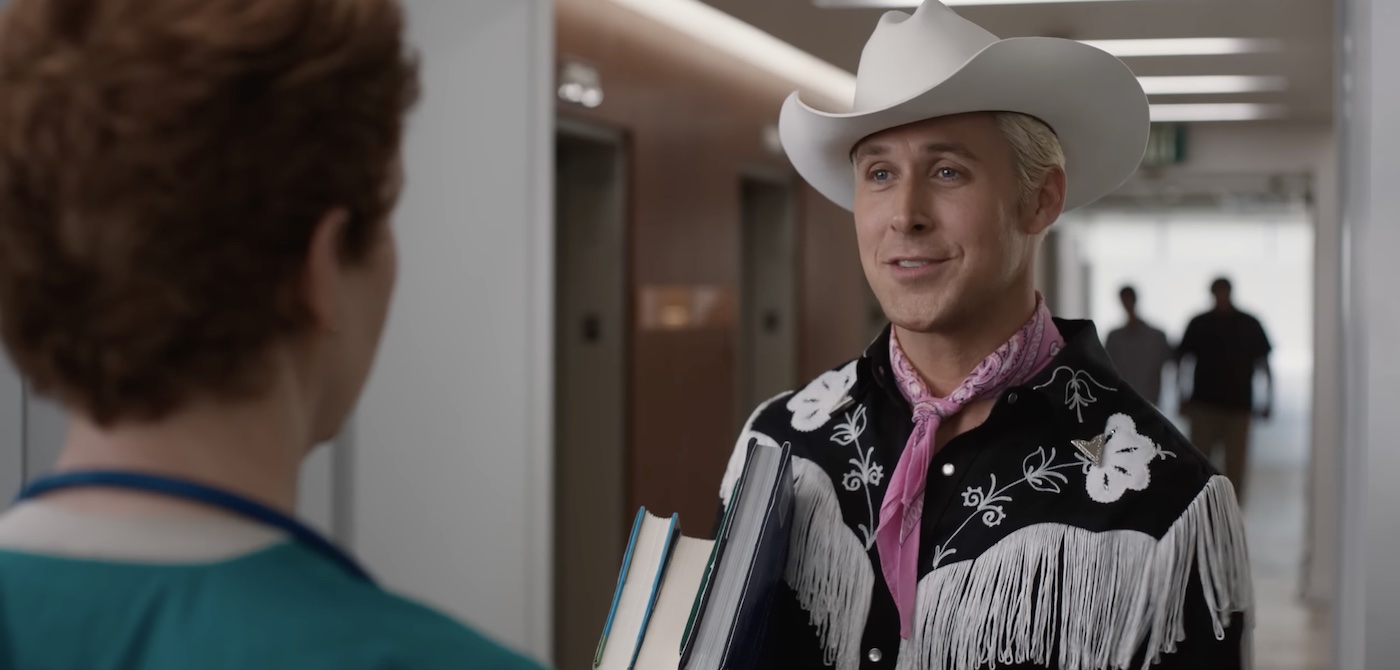
So much has already been written about this movie (powerfully and beautifully, I might add) by other people of Christian faith — and, specifically, by women of faith — that I am inclined to begin by pointing you to their outstanding work before I share my own thoughts and feelings on the film.
Read Alissa Wilkinson at Vox:
… [T]he path the movie traces is more than a little theologically familiar: a paradise lost, destroyed by the “knowledge” of “good” and “evil,” and a path back to restoration (with some bonus reflections on being created for a purpose by a Creator). And there seems to be some built-in interrogation of the Genesis narrative, too. Would it be better, after all, for Barbie and Ken to have continued living naively in a paradise where Ken is just “and Ken” and everyone seems happy all the time? Or did gaining knowledge of the outside world actually make them aware of their free will and equip them to live better, more fulfilled lives? It’s a question some theologians have approached throughout history, and one that recurs when we think about history: Golden ages often appear that way because we were naive to what was “really” going on back then, not because they were actually better.
… [A] blockbuster (or a doll) need not be brainless to be fun. Gerwig’s solo directing career thus far (which includes Lady Bird and Little Women) is a triumph of reimagination, an exploration of what it means to find out who you are and not allow yourself to be shaped by nostalgia and sentimentality while also living with deep, real love. That she managed to infuse the same sensibilities into Barbie is something near a miracle. I can’t wait to go see it again.
Greta Gerwig’s Barbie is a moving meditation on being embodied humans, specifically embodied women.
Gnosticism — the dualistic heresy that bodies and the greater material world are bad, and that God rescues us out of our bodies, through a gospel available via some secret knowledge — rages today as much as it did in the first few hundred years of the church. Then, the first Christians had to continually reassert the goodness of bodies, made evident in God in Christ humbly taking on flesh, and defeating sin and death through his body, nailed to a cross. From the Incarnation to the Cross to the Resurrection, the Christian story tells us that our bodies are good.
…
Barbie [argues] that it’s better for Barbie, for us, to say “yes” to being embodied, than to try to live within escapist consumer fantasies of perfection. It is better to live as human women than as plastic dolls; for while plastic dolls never have sagging boobs or cramps, they also never know the joys of a beautiful meal or the hug of a loved one or the feel of sand between their toes and mountain air in their lungs. Only embodied people know these gifts.
 Poor Barbie. She's learning what it's like to live under the curse of systemic discrimination. [Image from the Warner Brothers trailer.]
Poor Barbie. She's learning what it's like to live under the curse of systemic discrimination. [Image from the Warner Brothers trailer.]
Read Amy Peeler at Holy Post:
Christians are as guilty as anyone for failing to achieve the ideal of mutuality between the sexes, but it is our sacred texts that lay out the ideal with unmatched depth and beauty. What Barbie and Ken wished for is a description of the Christian church, where all people find their identity, worth, and purpose in Jesus Christ, and where men and women cannot relegate one another to the margins because both are necessary for the in-breaking of God’s kingdom on earth (1 Corinthians 11:11).
While this is far from being a fully-fleshed out vision of womanhood (notably, no men are around in the final scene), Gerwig is pointing us in the right direction. The path to recovering your personhood is to embrace your design, and design is given, not self-made.
Gerwig is meeting women where they are: exhausted with impossible standards, ashamed at never measuring up, and totally disoriented from reality. She lovingly pokes fun at the delusions we traffic in in order to “put on” our personhood, as if we are the sum of the roles we assume. Gerwig, a deeply Christ-haunted artist, traces givenness back to the Giver.
Gerwig told The New York Times that she wanted the movie to feel like a Shabbat blessing.
“I remember feeling the sense of, ‘Whatever your wins and losses were for the week, whatever you did or you didn’t do, when you come to this table, your value has nothing to do with that.’” Through Barbie, Gerwig wants to offer us a blessing: the knowledge that we are of infinite worth, not because of our beauty or market value, but because we have received our personhood and design as a gift. Gerwig leaves the next steps up to us, but she points us in the right direction: what were you made for?
In Part Two, I’ll share my impressions of the film’s strengths and weaknesses, and I’ll offer those views within the context of my own experience with toys, dolls, and action figures.
Was Christopher Nolan's Oppenheimer inspired by Raiders of the Lost Ark?
This exploration of Christopher Nolan's Oppenheimer is now available for subscribers who support Give Me Some Light over at Substack. It will eventually be published in full here. This post is just a preview — a selection of excerpts from that two-part post.
Excerpt #1:
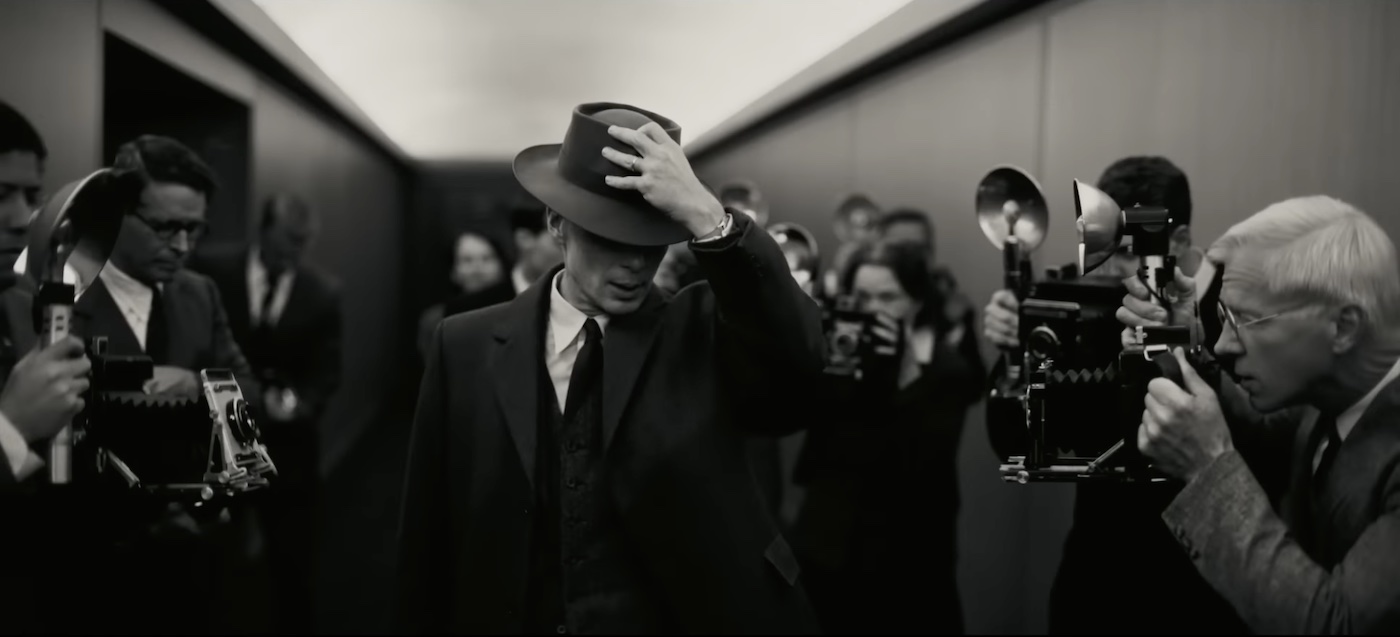
Contrary to popular opinion, no — not all religions are the same. Christopher Nolan’s Oppenheimer is a movie about very religious men, and we can see just what a difference their chosen religions make — for themselves, for their communities, for the world.
Before I go on, I should clarify my terms. When I refer to “religion” in this review, I’m talking about the beliefs that shapes a believer’s values, guide their decisions, and influence their practices and routines. As Bob Dylan famously sings, “You gotta serve somebody.” The choices that you and I are making this year, this week, this hour — they are influenced by what (and by who) we hold sacred. As my friend and counselor David Dark has wisely said,
We reveal our religion in so many ways every day. It’s in the way we drive during rush hour. The way we dispose of a plastic bottle. The decisions we make about who we date, who we marry, and how we treat them. The way we respond when someone of a different culture moves into the house next door. The way we choose some sources of news over others. The measures we take — or don’t — during a pandemic. The way we spend our time when no one is watching.
The future of the world can turn on one person’s choice in a moment of crisis. In those moments, that person’s beliefs really matter. Do we serve our egos, reputations, and legacies, or do we serve those who are vulnerable and in need? Do we love power, or do we love Love — the “Greater Good”?
I’m speculating here, but David Dark might think of Oppenheimer as an audit — or at least a study — of J. Robert Oppenheimer’s receipts.
Excerpt #2
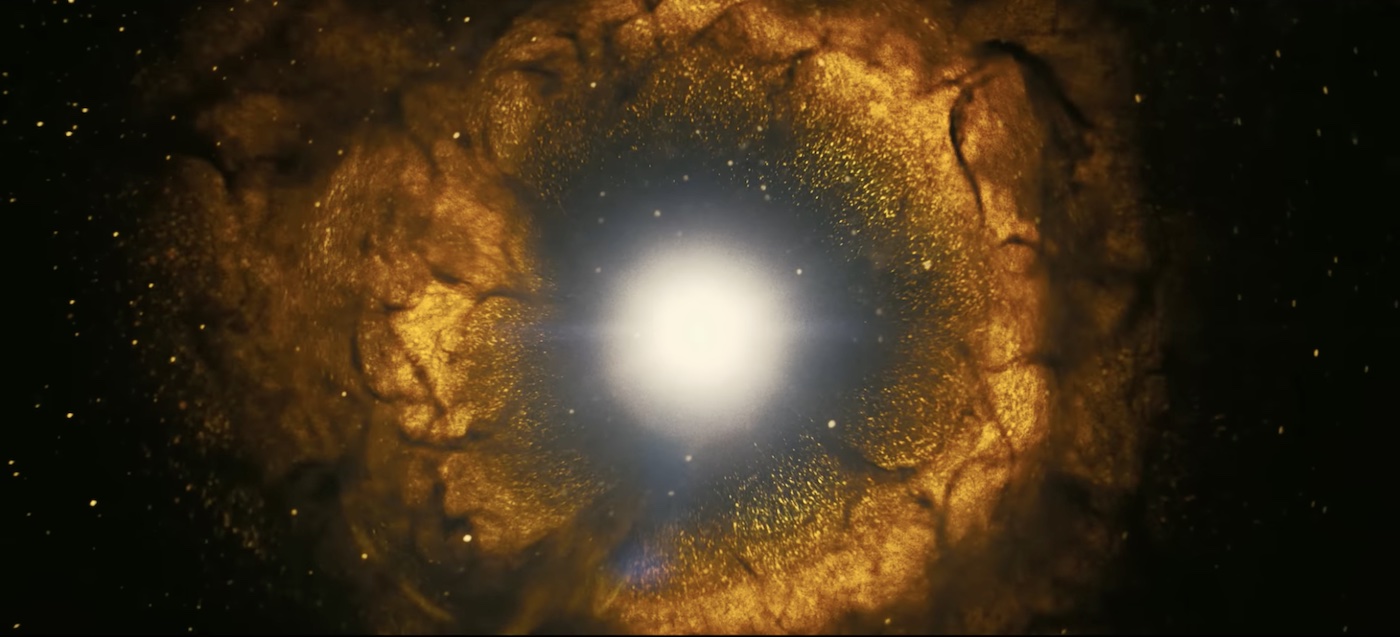
In Nolan’s multi-faceted mise-en-scène, these players — and many more — move about the blazing furnace of Oppenheimer’s busy mind and the flares of his conscience like planets orbiting the sun. Oppenheimer’s religion is evident in his passionate pursuit of knowledge through science, and Nolan illustrates these scientific speculations with abstract images of electrical and chemical reactions that recall the cosmic tangents of Terrence Malick’s The Tree of Life far more than the simplistic gimmicks of Ron Howard’s A Beautiful Mind. They are at once literal illustrations of the forces Oppenheimer is investigating and manipulating, and a visual poetry representing the forces and pressures expanding and contracting within Oppenheimer’s head, heart, and soul.
Excerpt #3
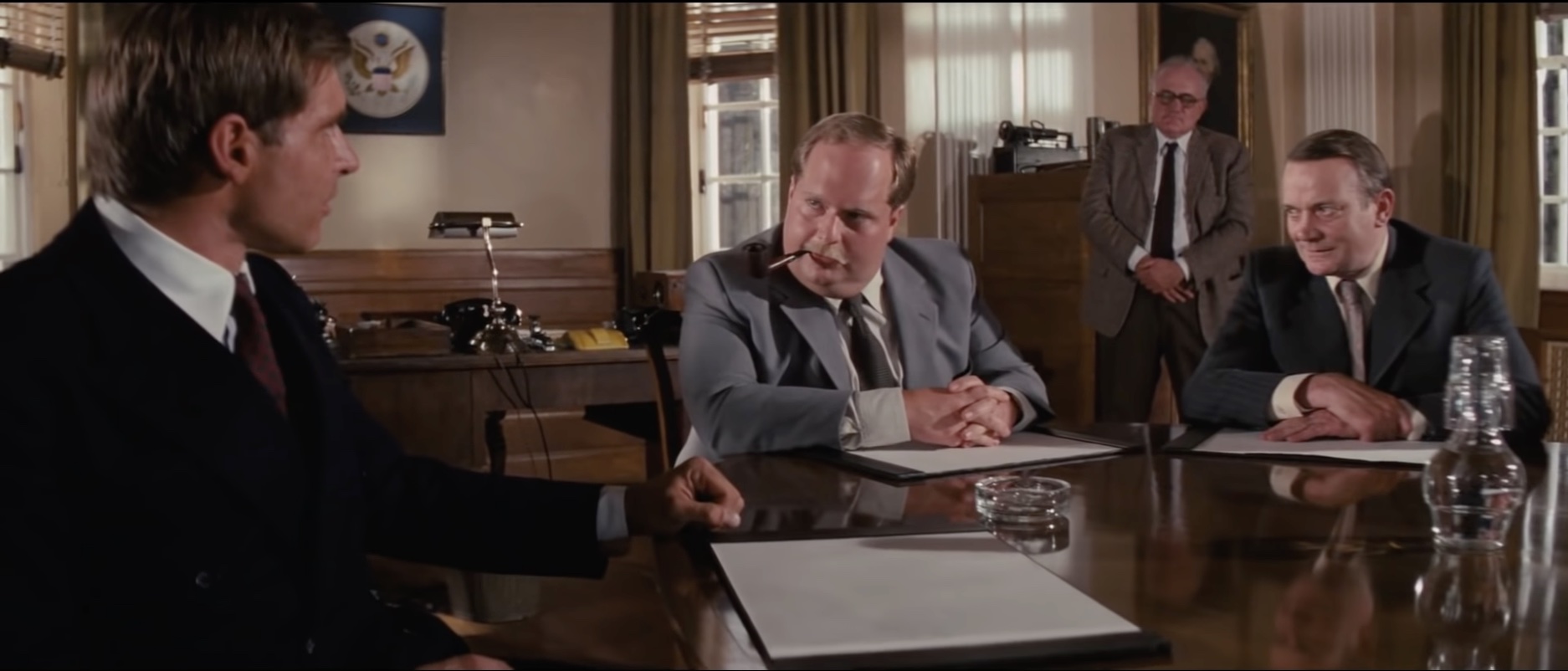
Surely the parallels between the two films are obvious, but I think they’re profound. What’s more, the distinct contrasts between the two are revealing.
Oppenheimer is a dark and despairing variation on the same story. Or is this a chicken-and-the-egg problem? Oppenheimer may have been influenced by Raiders, but I suspect that Spielberg and Lucas might have been thinking of the Manhattan Project when they dreamed up Indy’s first adventure. (It’s worth remembering that Indiana Jones and the Kingdom of the Crystal Skull opens with Indiana Jones on-site at the Manhattan Project and surviving the test-blast of an atomic bomb.)
Oppenheimer is a story of scientists — not archaeologists — in America and Germany racing to uncover the secrets of an explosive power that more than one character will refer to as “Divine. ” President Truman will call it “the greatest power in the universe.”
Our conflicted hero will engage in battles of wits with Nazi enemies even as he proceeds in deep distrust of his own American government superiors. (Note: When government agents approach Oppenheimer, seeking his leadership on the Manhattan Project, he helps them understand what they’re asking by standing in front of a chalkboard and lecturing, just like Professor Jones.) He accepts the assignment, but why? What is really driving him? Is he compelled primarily by a desire to end all war? Or is it that he is competitive and jealous in his desire to be the one who solves the mystery and seizes the power?
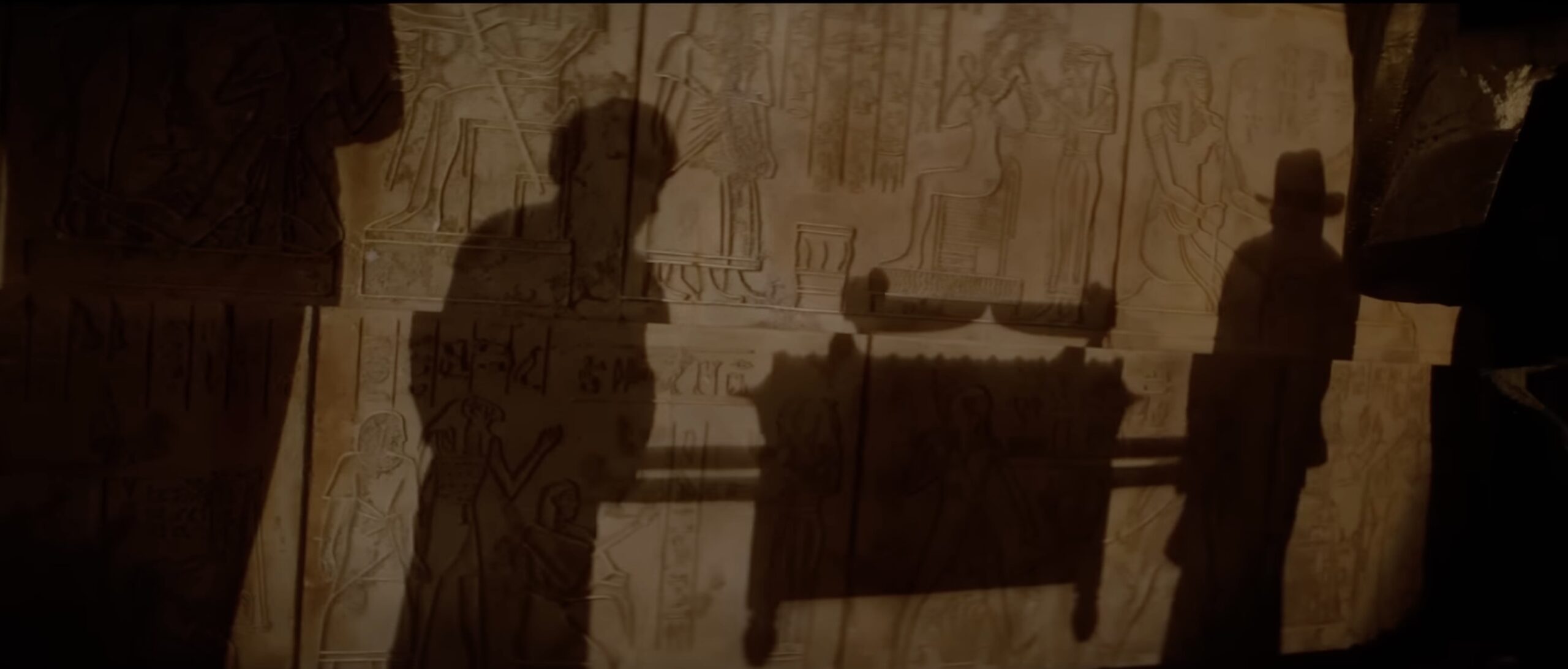
To read my detailed examination of the correlations between Oppenheimer and Raiders of the Lost Ark, and to access the full archive of posts there, join the team of subscribers who donate some dollars to support my work at Give Me Some Light.
A scorecard for Star Wars: Visions — Season 2
An early draft of this review was originally published on May 23, 2023,
at Give Me Some Light on Substack, almost three months before it appeared here.
Subscribe, and you'll read these reviews while the movies are still in theaters!
It’s because of my love for the journey of the original Star Wars trilogy that I’m bothering to write this.
In my experience — which, I know, will differ substantially from others’ experiences depending on their age and the way they came to Star Wars universe — the original trilogy played out as a complete and almost completely satisfying saga in itself, serving as formative influence in my understanding of the art of storytelling.
I saw the films between the ages of 7–13, although I was disallowed from seeing The Empire Strikes Back in that theater because the conservative evangelicals of my cultural bubble were convinced it was occulting and dangerous. (I’ve written about this substantially in my moviegoing memoir Through a Screen Darkly.) Episodes 4–6 taught me about the basic bones of mythological storytelling. They had a daring moral vision that eventually corrected and transcended the basic us-versus-them plotlines that dominated adventure storytelling then and that still dominate media today. They championed love, humility, self-control, patience, kindness, faithfulness, and empathy over enmity. The lightsabers were important, but even more important was when, how, and why they were used. It was, ultimately, an epic instilling the moral vision that today some would call antifa.
Because of that profound experience, I’ve remained skeptical of — and have usually been disappointed by — anything branded as Star Wars post-1983.
The prequels? I’ve made my peace with them. I worked hard to love them because I wanted so badly to return to that context, with those sound effects, that John Williams music, and those themes. But eventually, my optimism — my “new hope,” if you will — collapsed under the weight of increasing annoyance with their bloatedness and their blandness. They were packed with intriguing ideas, but they rarely suspended my disbelief. Lucas had become a very different artist, with very different interests, and by returning to the director’s chair he revealed that the original trilogy’s greatness was a result of remarkable and unrepeatable collaborative chemistry in a particular context that could not be re-created. He revealed that he had become a terrible director of actors; in fact, he seemed uninterested in them as anything more than mannequins in costumes. He revealed inadvertently that the magic of the first series had everything to do with lovingly handmade hardware; very little in the glossy animation of the prequels looks convincing or weighty. And he also revealed that the limitations on his creativity in those first films were a blessing that kept him from spoiling the work with excess and ill-advised tangents. The prequels, while they remain an important historical artifact for their important advances in digital-animation, were poorly cast, amateurish and dull in their screenwriting, overly long, and seemed to exist in a different universe than the original stories.
Regarding all of the arguments about what is “canon” and what isn’t — I don’t accept the third trilogy, especially the two films directed by J.J. Abrams, as canon. Why? The first six films, for all of their highs and lows, were a coherent saga from a single storyteller. There was a human soul that served as the foundation, the conscience, the “yes” and the “no” of things. In the third trilogy, it’s clear that committees are much more instrumental in the storytelling, weighing how to keep fans happy, trying to repeat what worked before, and serving up “surprises” that were just variations on surprises we’d seen in this universe before. They are derivative and sentimental, and they contradict the moral trajectory of the original Skywalker saga, effectively dismissing what was profound about it in the first place.
The exception: Rian Johnson’s The Last Jedi has been the only Star Wars film post-1983 that I found engaging and, occasionally, thrilling. Here was a brave storyteller with the guts to challenge audiences with new and meaningful ideas rather than just playing to the crowd. It made me believe that there might still be some potential for genuine artists asking unexpected questions that would lead to significant revelations and consequences within this world of ideas. It was still “fan fiction.” And I believe that’s what were stuck with forever, at this point — fan fiction of varying quality. Fan fiction can be meaningful and even inspiring, sure. But that is very, very hard to achieve.
And now, in the era of Star Wars as television franchising, I’m more likely to cringe and avoid anything branded as Star Wars than I am to invest any time in it. I’ve been insulted too many times, bored too many times, even frustrated. The only TV series of this kind that has really engaged and moved me so far has been Tony Gilroy’s Andor, a Star Wars series for adults with outstanding writing, consistently excellent performances, and a story arc that restored the joy of surprise to the Star Wars universe for me for the first time since The Last Jedi. By my lights, Rian Johnson and Tony Gilroy have set the standard for what is possible. Those guys are authors with meaningful stories to tell.
While The Mandalorian got off to an enjoyable start, it did so by leaning too heavily into fan service, sentimentality, and the kind of plot twists that keep narrowing the Star Wars universe to a community in which everybody seems to know everybody. It also had plenty of storylines that contradicted that core backbone of the original trilogy’s moral vision. At times, it’s shown us what high-spirited fanboys with some imagination and a lot of money can do on a good day. It has expanded the Star Wars universe in an entertaining fashion, but without deepening what it all means.
I couldn’t be bothered with The Book of Boba Fett, and the takes I heard from big Mandalorian fans seemed to consistently support my decision: “Well, it’s not very good until the Mandalorian shows up.” Great.
I avoided Star Wars Visions, Season One as well, as I heard that the storytelling was poor. So I didn’t pay any attention to the promotions of Star Wars Visions, Season Two… until somebody said two magic words:
“Cartoon Saloon.”
Oh.
Okay.
The studio that created The Secret of Kells, Song of the Sea, The Breadwinner, and Wolfwalkers, the most impressive run of animated masterpieces since the height of Studio Ghibli and the golden age of Pixar?
I tuned in as soon as I had an opportunity, and I was not disappointed… by that particular episode. It was visually dazzling, unpredictable, and… well, I’ll say more later. The price I paid for enjoying Cartoon Saloon’s installment so much was that I ended up watching the whole series in the hopes of more surprises. More often that not, the shorts were disappointing.
So, since I want to make something useful of the time I invested, here’s my report card on Star Wars Visions, Season Two.
GRADE “C-MINUS”
“Journey to the Dark Head”
Directed by Park Hyeong-geun
A hopeful mechanic and a disillusioned Jedi team up for an unlikely quest to turn the tide of war.
All of my anime pet peeves are here:
- More emphasis on emotion than storytelling substance.
- Characters who seem to careen between extreme emotions in ways that make me think it must be exhausting to be them.
- A preoccupation with faces distorted with rage in close-up.
- A boy and a girl falling through the clouds — every single time!
- Seemingly endless fight scenes.
Also, this dude Toul is the worst Jedi candidate I've ever seen. Seeing this guy taken seriously and sent out on a mission unsupervised? My faith in Jedi Councils has never been lower.
Also, I do not understand what in the world this is all supposed to mean. Whenever conversations about "the Balance of the Force" conclude with "Welp, the light and the dark will always be equally entangled, and there will always be hope and despair in equal measure," I'm always like "Great. I'm out. What's the point? What does hope even mean if we can only hope for a perpetuation of suffering?"
“The Pit”
Directed by Justin Ridge, LeAndre Thomas
Letterboxd synopsis:
A young prisoner, forced to dig for kyber by the Empire, plans an escape for [himself] and his people.
Well, okay — let's at least acknowledge that the plot has its present-day relevance. The Pit focuses on a slave-labor community who struggle against despair when their overlords abandon them down in the very mining pit they themselves have dug, and nobody can think of a way out. Throw a rock in the air these days and you'll strike an exploited worker of one kind or another.
But thematic relevance is not the secret to great art. This animated short is unremarkable in almost every way — easily the weakest of the eight Visions S2 episodes I've watched so far. Some of these Visions episodes demonstrate very little overlap between their stories and the Star Wars universe, and this one is the worst offender on that count. The slave-drivers of this naive mining crew are stormtroopers, and the mining operation is for kyber crystals (which even a lot of Star Wars fans don't know very much about). And that's it.
This may well have started out as someone's idea of a dystopian fantasy film in the vein of Mad Max that was then hastily revised to include a couple of recognizable Star Wars designs just to qualify. That makes it feel extraneous... or just extra.
As a result, its greatest distinction its its primarily black cast — an honorable priority, but when poorly handled it results in clumsy, heavy-handed allegory.
And yet, hey — Daveed Diggs!
GRADE “C”
“Sith”
Directed by Rodrigo Blaas
A former Sith apprentice, leading a peaceful, but isolated life, is confronted by the past when her old master tracks her down.
Come on — whoever wrote that synopsis has buried the lede: This is a movie about recovering Sith apprentice who has run away to sort out her troubles through art-making. Sounds like my kind of Star Wars story!
"Sith" is the opening episode of Visions S2, and it gets things off to a splashy start with vivid watercolor-ish fireworks, an effectively sinister Sith Lord, and the latest in a long line of Star Wars fan-fiction funky little Droids Adorbs.
But the protagonist, whose design combination of a Terminator cyborg arm and a Cruella DeVille hairstyle suggests a complicated character, turns out to be a bore.
And at the end of the story, I feel less knowledgeable about the cosmic battle of light against darkness — I don't find any kind of wisdom in the battle's resolution, or anything in particular to admire about our "hero" except that she decided she wanted to leave the Baddies and start an art studio.
Pleasing to look at and listen to, but ultimately less than the sum of its finger-painty parts.
“In the Stars”
Directed by Gabriel Osorio
Two sisters, the last of their kind who live in hiding on their ravaged land, squabble about how to survive with the Empire encroaching. On a water run, the sisters must fight back when they are discovered.
Clearly a labor of love, and glorious feat of stop-animation. Although the open chapter gets awkward with exposition to fill us in on the sisters' backstory, that backstory is cleverly animated with something resembling chalk art. After that, the sisters embark on an adventure to steal drinkable water from some kind of Imperial pollution plant that's turned their world toxic, and that's where the complexity of the animation becomes rather astounding.
And yet, once again I find the storytelling ultimately dissatisfying. In this world, it seems that the Force is just too easy, too accessible, ready to use whenever you need if you just furrow your brow, clench your teeth, and concentrate hard enough. That makes the Force less mysterious, less interesting, less meaningful. No only that but it seems that just about any architectural monstrosity established by the Empire is take-downable if you just strike the right point.
The calamity at the film's conclusion is bizarrely over-the-top, not to mention inexplicable.
“The Bandits of Golak”
Directed by Ishan Shukla
Letterboxd synopsis:
Pursued by the Empire, a boy and his force-sensitive younger sister seek refuge at a vibrant dhaba.
Weirdly inconsistent in its animation — needed another six months of work. It looks like a low-budget straight-to-video production for Sunday schools.
I like the slow-build of tension in how The Force is used in this episode, beginning with a child's sense of innocent play and then building to some truly unsettling levitations.
Boy, they really went all in on making up for lack of certain cultural representation here, didn't they? Has any Star Wars environment ever adhered more closely to particular Planet Earth ethnic context? At one point I was bracing for this to blow up into a full-on Bollywood musical number, and I was actually a little disappointed when it didn't.
At this point in this Visions season I'm weary of lightsabers. The magic of lightsabers in Star Wars used to be in their scarcity, and now it's just "You get a lightsaber and you get a lightsaber and you...!" Still, this duel is flashy and has a decent sense of gravity.
Plot-wise, this one works well with Screecher's Reach to bring symmetry and balance to the Force.
GRADE “B”
“Aau’s Song”
Directed by Nadia Darries, Daniel Clarke
A child who longs to sing must stay quiet because her voice can cause great calamity in the mines.
Watch this one for the loveliness of fabric animation.
While the story's connection to Star Wars is slight and inconsequential (like so many of these stories), the love and passion evident in the handmade art is radiant. It's like one of those children's illustrated storybooks that are designed for us to touch the illustrations — the three-dimensionality of the stop-animation textures is enthralling. It's not designed to show off; rather, it creates a distinctive animated world. I can imagine Disney/Lucasfilm selling some toys from this one to small children who bond with Aau.
You might call this one, of all of these Visions... the most heart-felt.
Thank you! Thank you! I'll be here all week. Come back. Bring a friend.
GRADE “B-PLUS”
“The Spy Dancer”
Directed by Julien Chheng
Letterboxd synopsis:
The premier dancer at an Imperial-frequented cabaret is tested when her identity is compromised.
Okay, a question about the opening scene: Isn't that one guy in the opening scenes a little chonky for a stormtrooper? Are these troopers not clones? Or is there some level of Star Wars lore that I'm just not nerdy enough to know?
I'm assuming this film's animation was started before Nope was released, but the dancer's big flowy entrance really reminds me of the big "unfurling" of the alien spacecraft in that film.
There's a certain revelation late in this film that made me want to put a moratorium on a certain kind of plot twist in Star Wars films. But I am intrigued by this Visions season's focus on stories involving the many and varied ways in which young people are lured/sold/abducted into serving the Dark Side.
Ultimately, this one deals another hard blow to anyone who still holds that, when it comes to shooting, "only Imperial stormtroopers are so precise."
GRADE “A-MINUS”
“I Am Your Mother”
Directed by Magdalena Osinska
Young pilot Anni, who is embarrassed by her sweet, but clingy mum, must team with her for a madcap family race at the academy. Along the way, their relationship is tested by the elements, their old ship, other racers… and each other.
Why am I surprised that when Aardman does Star Wars, it's totally an Aardman movie?
This was unexpectedly hilarious, joyously complicated, full of surprises, and easy to imagine happening in a galaxy very, very close to Wallace and Gromit's. Probably the silliest Star Wars adventure of all, and I mean that as a compliment.
If we’re going to indulge in fan fiction, let’s have some fun with it and remember that Star Wars was originally imagined with children in mind.
Put Aardman in charge of the next Star Wars Holiday Special.
GRADE “A”
“Screecher’s Reach”
directed by Paul Young
A young girl, seeking reprieve from her days in a rural workhouse, discovers a legendary haunted cave with her friends.
Visually enthralling in the unmistakeable Cartoon Saloon style, with perfect voice casting, characters who make strong impressions quickly, and an incredibly powerful use of fierce luminosity and pitch-black darkness.
It's unacceptable that J.J. Abrams' The Rise of Skywalker cost me 141 minutes that I cannot get back… but when Cartoon Saloon gets to play in the Star Wars universe, I only get 15 minutes, and I want at least 130 more.
Unlike Abrams, Cartoon Saloon’s artists clearly care about beauty, wisdom, and strong-boned storytelling.
I'd rather watch this ten times through than sit through Rise a second time.
That ghost is the most terrifying thing Cartoon Saloon has ever unleashed, and maybe the scariest animated monster I’ve ever seen.
And that conclusion — yes, for a scene like that, you definitely spend the money for the voice of Angelica Huston.
Disturbing and satisfying.
I’ll say it again: If you give Cartoon Saloon the chance to make a full Star Wars feature, I will be there on opening day, fully confident that the Force is strong in them.
Showing Up: a movie that will make artists feel seen
[An early draft of this review was originally published on May 23, 2023 at Give Me Some Light on Substack, almost three months before it appeared here. Subscribe, and you'll read these reviews while the movies are still in theaters!]
Showing Up, the latest film from the provocative, meditative American storyteller Kelly Reichardt (writer/director of First Cow, Certain Women, Wendy and Lucy, Meek’s Cutoff, and Old Joy), stars the great Michelle Williams as Lizzy. Lizzy is a sculpture artist striving to make progress in her work while also meeting the demands of a bill-paying job. And it's not a particularly exciting job, but it's the kind of job so many artists find they have to manage in order to afford having any time at all for their true calling.
Lizzy is, arguably, a little better off than some of us who are always striving against daunting challenges to live a life of creativity. At least she gets to work in an environment surrounded by other artists and art students, where the employers appreciate the imagination. (This runs quite contrary to artists in academia who often learn the hard way that their administrators don't understand, respect, or care about creative work.) Specifically, Lizzy works a desk job at the Oregon College of Arts and Craft — an actual art school that recently closed.
But an artist who works among other artists also faces distinct challenges. In fact, as I live and work in various circles of visual artists and writers, Lizzy’s challenges are so familiar to me — so specifically and piercingly personal to me — that I emerged from the theater feeling like I’d just grieved my way through the tortured testimony of a close friend.
Don't get me wrong — I mean that as a recommendation. While Reichardt's characteristic truth-telling makes some aspects of this poignant portrait rather painful, Showing Up is, above all, a comedy. And a very funny one.

It’s easy to read Showing Up as something of a memoir: Like director Jim Jarmusch’s whimsical and episodic Paterson in 2016, which followed a poet as idiosyncratic and introspective as Jarmusch himself, here's a movie by a singular artist about a singular artist that is so full of truths known only by artists who have lived them that it is going to be beloved by those artists.
And, like Paterson, it's also on a wavelength that will make its subtle comedy tremendously funny for artists. And not just "Ha-Ha" funny (although there's plenty of that), but "Laugh-of-Recognition" Funny — the Funny that the Over the Rhine song says "makes you laugh when you feel like dying." Indeed, I laughed out loud at its wit and wisdom even as I felt like crying.
For example, we’re drawn into the maddening ways in which mundane, practical complications can feel part of a conspiracy designed to prevent an artist from concentrating. Lizzy often teeters on the edge of madness or despair over an accumulation of interruptions:
- the fact that her apartment’s hot water supply has vanished;
- the fact that her landlord (the brilliant Hong Chau, who seems to be everywhere these days) can't get around to helping her because she is an artist herself under extraordinary pressure;
- the fact that Lizzy's landlord asks for her help with time-consuming and emotionally demanding distractions, like the rehabilitation of a pigeon injured by Lizzy's own cat, and
- the seemingly inescapable dramas of Lizzy's distinctly unhappy family (played by Judd Hirsch, MaryAnn Plunkett, and John Magaro).
And that just scratches the hand-painted surface of Lizzy's predicament.

These kinds of things are the sort of trouble that I find myself and other artists commiserating about on a daily basis. Having said that, I was the only one in my audience of about 30 laughing out loud as Lizzy’s exasperation seems to age her before our very eyes. And I laughed almost all the way through the movie until my anxiety nearly wrecked me in the last 15 minutes. I tried to be quiet. I hope I didn't bother anybody.
There is a particular kind of torture in the life of the artist who loves not only art, and not only themselves, and not only their family and neighbors, but the world around them. If the world figures out that you are willing to love, willing to care, willing to watch over the injured little things of the world, then the world will ensure that you open your door to a world of endless needs. It will wring that love out of you until you have almost nothing left for your art. And you will feel like a failure, both in trying to save your unsavable world, and in realizing the art that you could complete if only everyone would give you some peace and quiet. That is the truth this movie knows.
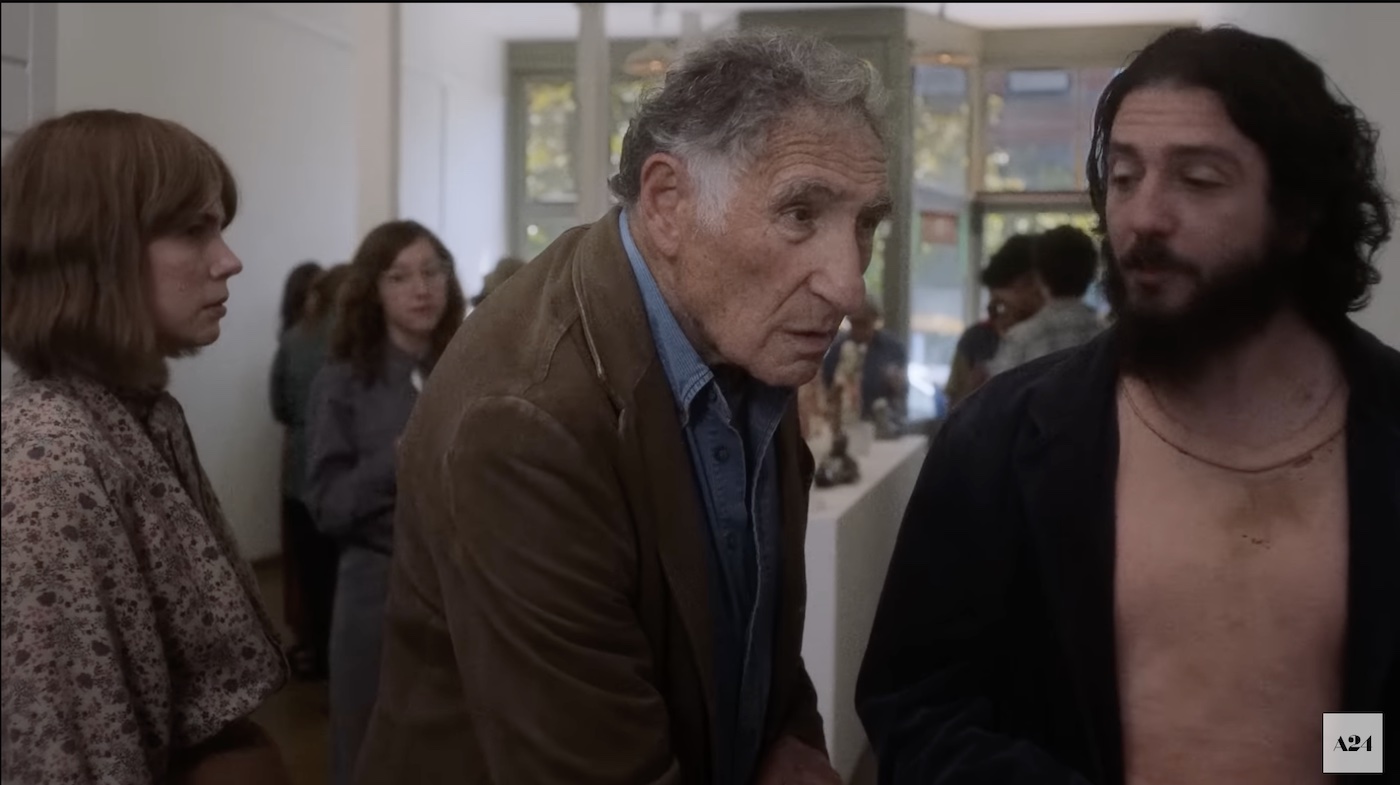
I’m so grateful — and perhaps a little less lonely — to find companionship like that in this movie. It’s like finding a film made in a language that you speak fluently but that you never expected to hear art the movies.
And what a great performance by Michelle Williams, who was impressive in Steven Spielberg’s The Fabelmans, and who has given us such a wide variety of nuanced characters over the years. (I still look back with deep fondness on her supporting role in The Station Agent, where her chemistry with Peter Dinklage was such a delicate joy.)
Showing Up is going to be one of those films that I go on recommending for years to come, but with particular enthusiasm to certain people: those who spend their “free time” scowling at rough drafts of poems, sketchbooks full of concepts, and differing arrangements of songs, trying to quiet the noise of the everyday so that they can make room for inspiration.
It seems appropriate that I saw this film at Seattle Grand Illusion: a theater that has been a labor of love for its managers for decades, and which has survived against all odds. The building in which it has given Seattle moviegoers such rare and wonderful occasions to revisit classics and discover rare wonders … is being sold. So, farewell, Grand Illusion Cinemas! Thank you for so many years of unforgettable films! You introduced me to The Son by the Dardenne brothers, which is one of my all-time Top Ten favorite films! You introduced me to About Elly, by Asghar Farhadi, which helped kindle my deep love for Iranian cinema. And those are just two examples. This was a beautiful date night for our long-lasting relationship. I'm ever so grateful. And I hope that your intention to come back to life in a new location comes true.
Second star to the right and straight on 'til ... mourning?
[This review was originally published on May 11, 2023 at Give Me Some Light on Substack. Subscribe, and you'll get these reviews while the movie is still brand new!]
Do you hear that tick-tocking? Do you remember what that means? Somewhere, a crocodile lurks, the timepiece in his belly counting the days since this predator swallowed Captain Hook’s right hand.
And that means a fantasy world — one full of whimsy, swashbuckling, children who don’t want to grow up, and cringe-worthy racial stereotypes — is just around the corner! Are you ready to go back… to Neverland?
I think everyone will understand if your answer is “No.” You’ve been invited back before. Several times, probably. And was the journey all that you hoped for? Or were you, like Wendy in most Peter Pan stories, relieved when you got back home from the realm of arrested development?
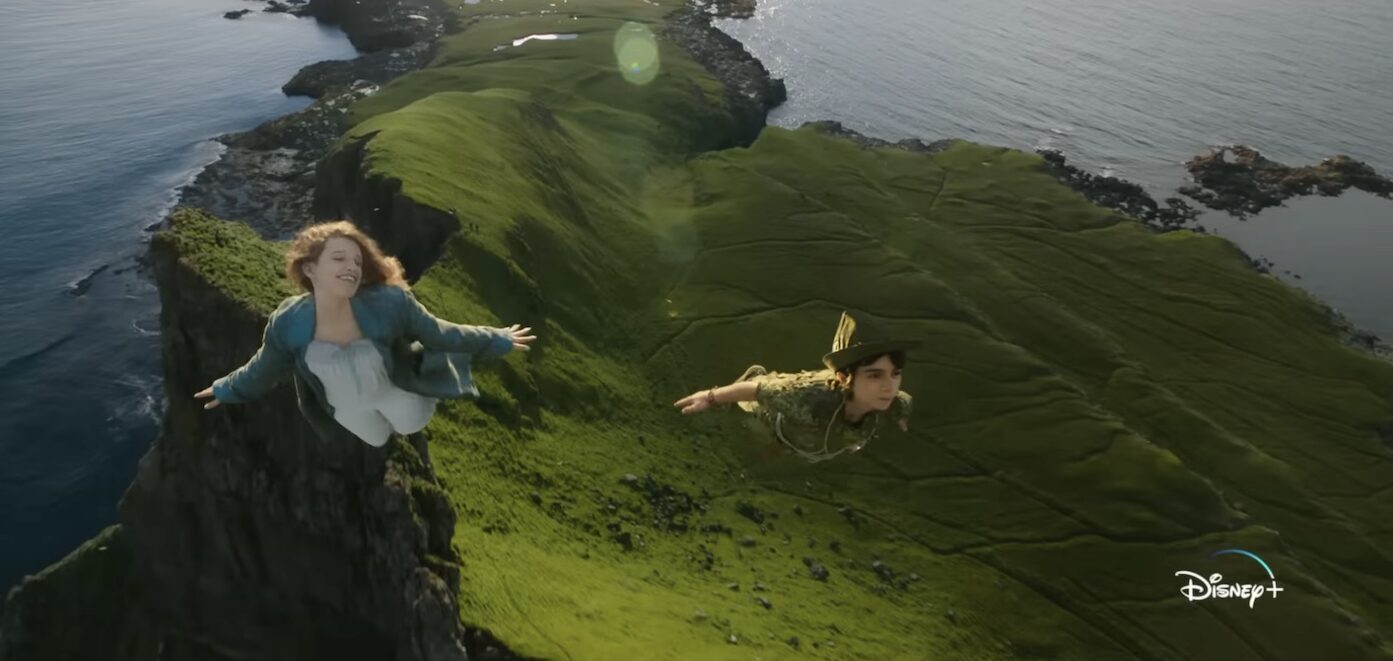
In the 70 years since Walt Disney’s animated adaptation of J.M. Barrie’s classic stories, we’ve seen filmmaker after filmmaker try to get a live-action adaptation off the ground. Most attempts, while well-intentioned, have only managed the equivalent of a few long-jumps; none of them have soared. I’m fond of P. J.Hogan’s 2003 version with Jason Isaacs as Hook. And the 1924 silent film is still a wonder. Steven Spielberg’s 1991 Hook remains the most talked-about, but it’s still frustrating for how it squanders Robin Williams’ inspired turn as a bad dad who has forgotten he was once the playful Pan. The thing’s to soggy with sentimentality; and Spielberg somehow forgets that pirate ships are meant to be seaworthy cinematic wonders, not harbor fixtures. (I'm still angry about this: How does the master of UFOs and flying bicycles and Indiana Jones car chases make a Peter Pan movie in which the ship never sails?!)
Still, there’s just so much potential in this story of lost boys who long for their mothers and refuse to grow up, fairies who pepper you with pixie dust if you shake them just right, and pirates who aim their cannons skyward at flying children.
I’ve been optimistic ever since I heard that Disney had given the ship’s wheel to director David Lowery. I’m still high on the head trip of his wildly imaginative 2021 re-imagining of The Green Knight — one of three films I ranked as my #1 of that year — so I couldn’t wait to see how he would make All Things Neverland new.

Alas, while Lowery’s Neverland is an enchanting destination — its dreamy London-by-night skylines, its exotic island environments, and its enchanting networks of caves offering epic possibilities — his idiosyncratic storytelling style seems stifled, as if the studio had promised him a puffy-sleeved pirate shirt and instead strapped him up in a straitjacket. The final cut reeks of studio interference, the results so dissatisfying that Disney has decided to bypass big screens send it straight to Disney Plus won’t put this on big screens, as if to punish an artist for thinking outside the box.
On Letterboxd, I'm giving it the very rare combo of only "✩✩✩" out of 5 and a “🧡” emoji — which means I think the movie’s problems are almost as obvious as its strengths, but I somehow found myself savoring glimpses the voyage we might have taken if the system hadn’t gotten its hooks into Lowery’s imagination.
Some Peter Pan and Wendy Pros:
- Lowery’s Neverland may be the melancholiest fantasy world the big screen has ever seen, but it looks great. I don’t mind a moody fantasy — Spike Jonze’s Where the Wild Thing Are is among my favorite films. If Disneyland looked like this, I would fill a backpack with rock-climbing gear and call my travel agent. It looks like a wonderland for the sort of sailors and hikers and spelunkers who bring along books of poetry and blank journals.
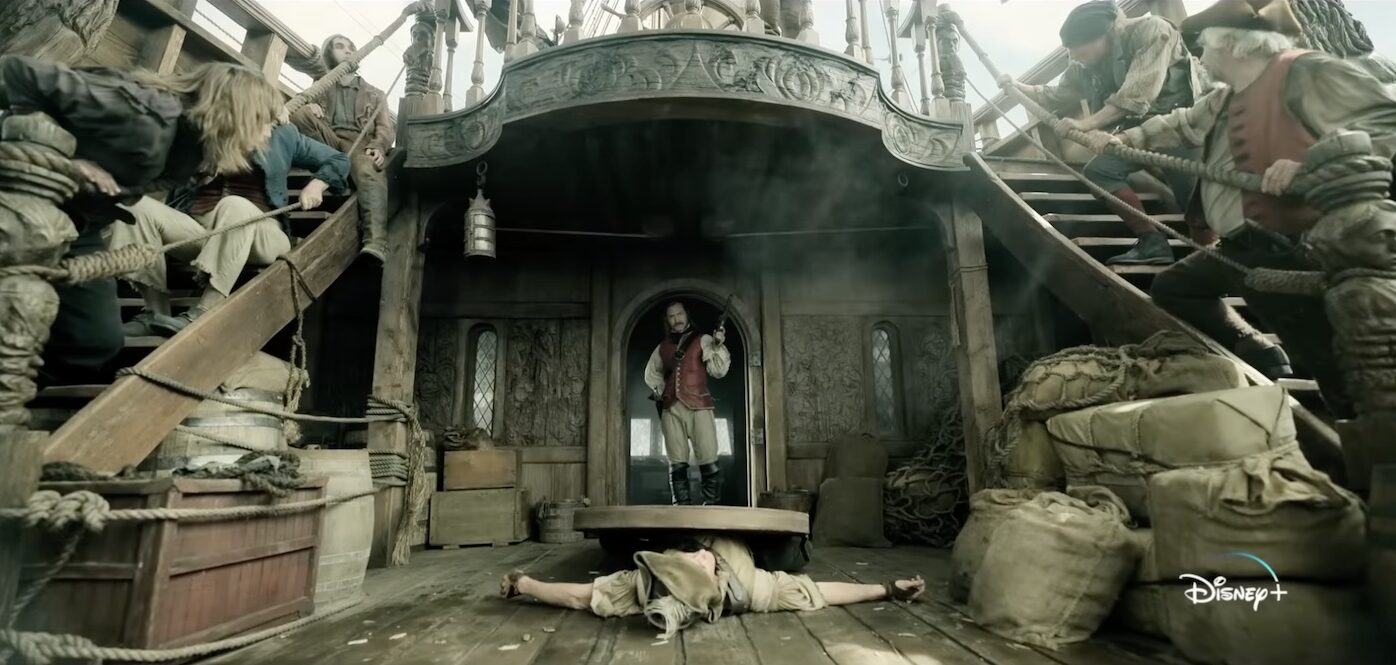
- Jude Law, who has always been as at his best when he leans into his character-actor strengths instead of leading-man responsibilities, steals this movie whenever he’s onscreen — and I’m not sure I’ve ever been able to say that about him before. He has a surprising take on Captain Hook: This pirate is temperamental, yes… but that's because he's more confused than wicked, as if he's not sure how he got into Neverland to begin with, and he’s half-expecting to wake up from this dream and return to his work as mild-mannered Watson in a Guy Ritchie Sherlock Holmes movie. There's a softness and an insecurity in Hook’s half-whisper that suggests he's wondering "Did I leave the oven on in some other dimension once upon a time?"
- Jim Gaffigan (what a pleasant surprise!) gives us a Smee who has some gravitas and dignity. Somehow, dressed up in this silliness, he seems compelled to counteract the camp and dig deep for some wisdom and pathos. If there must be a spin-off or a sequel or a prequel, make it about Smee, Disney! (Or, even better — let Gaffigan do his next Amazon Prime standup special in this costume.)
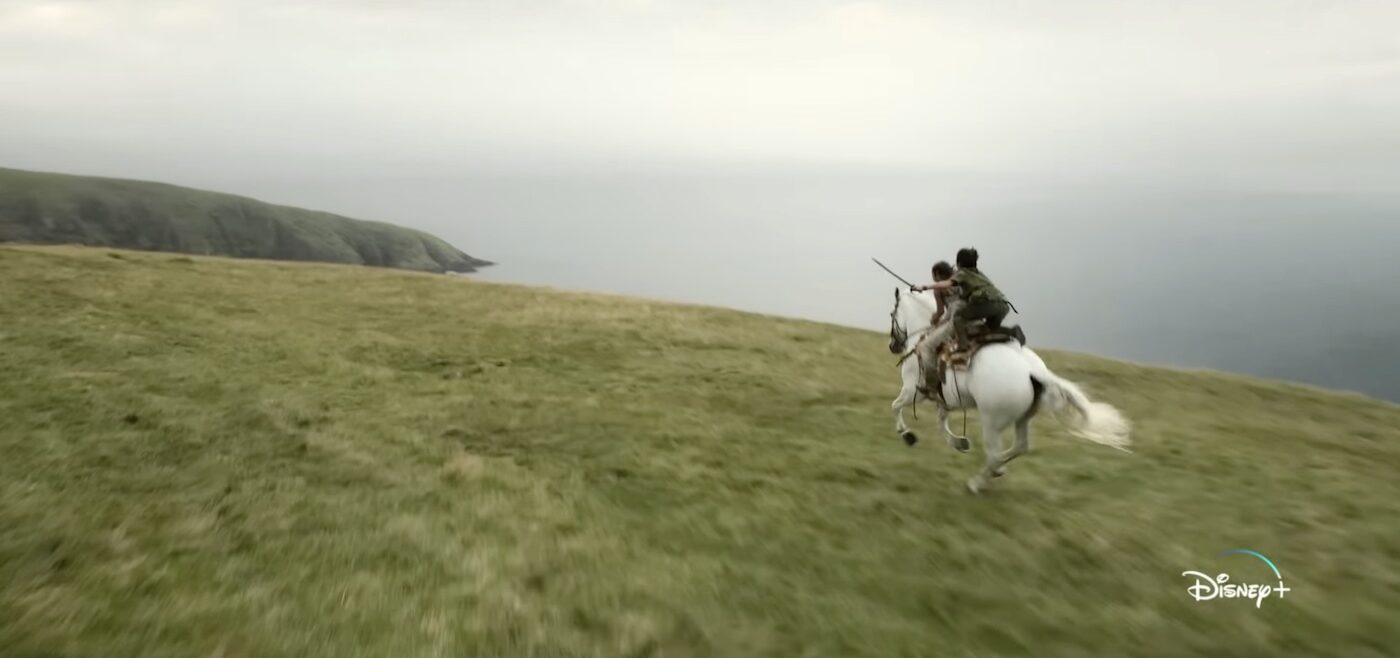
- Tiger Lily and her people are treated with respect in this version — and thank God! Disney’s history with this story is as disgraceful in its treatment of Native Americans as Song of the South was for Black Americans. There are a few moments here where we might imagine Wendy and her brothers stumbling into Terrence Malick’s The New World. (Still, making Tiger Lilly’s tribe noble and respectable doesn’t help us understand what in the world they’re doing in Neverland. If this is a place for people who refuse to grow up, what are we to make of the presence of Native Americans?)
- And Hook's ship — my stars! — it looks incredible both at sea and in the air. And that’s the sight I always hope I’ll find breathtaking in any adaptation of this story.

Some Captain Hook Cons:
- This Wendy, played by Ever Anderson (daughter of Milla Jovovich and filmmaker W.S. Anderson), is both too precious and too capable, an ideal who can sing, swoon, swordfight, and soar — or whatever is asked of her — at a moment's notice, without a single idiosyncrasy to make her interesting. She's like an annoyingly perfect theater kid who hasn't yet found a way to turn a "type" into a character. That’s not Anderson’s fault; she’ll be fine when she’s cast in the right role. It’s the way this character’s written — or, rather, whatever aspects of her character as written survived the studio slicer-and-dicer and made it to the screen.
- Peter Pan, as played by Alexander Molony, is off-puttingly glum, annoyingly fickle, and, well, just dull. He has a way of rudely and repeatedly interrupting his own movie and demanding attention. A certain petulance is proper for a character who refuses to grow up, but the thing about Pan is that he’s supposed to be charismatic. We’re supposed to find the thought of playing around with Lost Boys appealing, at least for a while. But this Pan lacks the mischievous spark and the joy in action that is essential to the character.
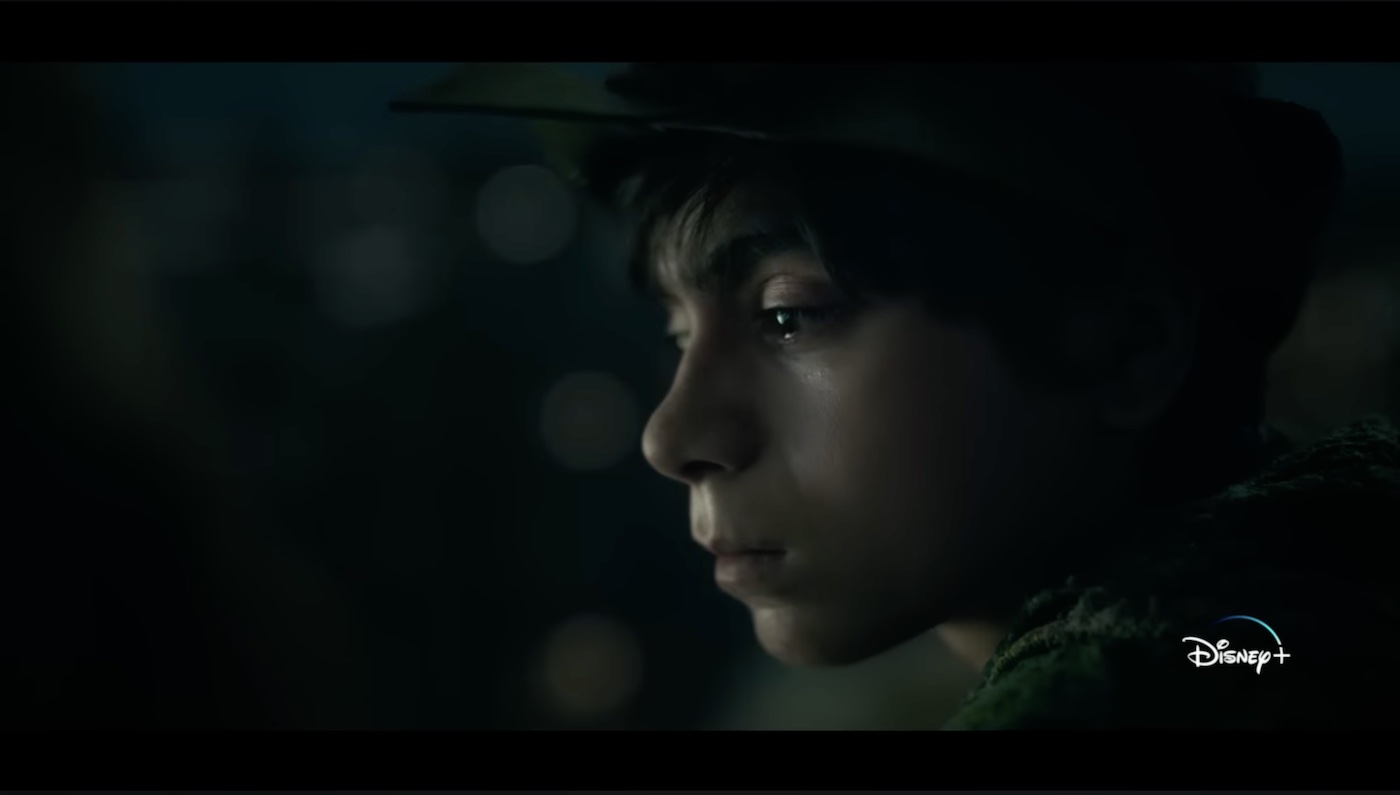
- The symphonic score, credited to Daniel Hart, is lush and euphoric, with occasional nods to melodies from the animated original. But it’s accompanying a much richer and more dramatic film than the one we're watching. It seems convinced that we're all caught up in swells of romance and drama and action, and, well... I'm not.
- Have I been spoiled by the glory of the first few Pirates of the Caribbean films and by Taika Waititi’s ingenious Our Flag Means Death? I just keep hoping for this crew of villains to distinguish themselves and kick some life into the storytelling. Alas, they might as well have been generated by A.I. with the prompts “typical + pirates.”
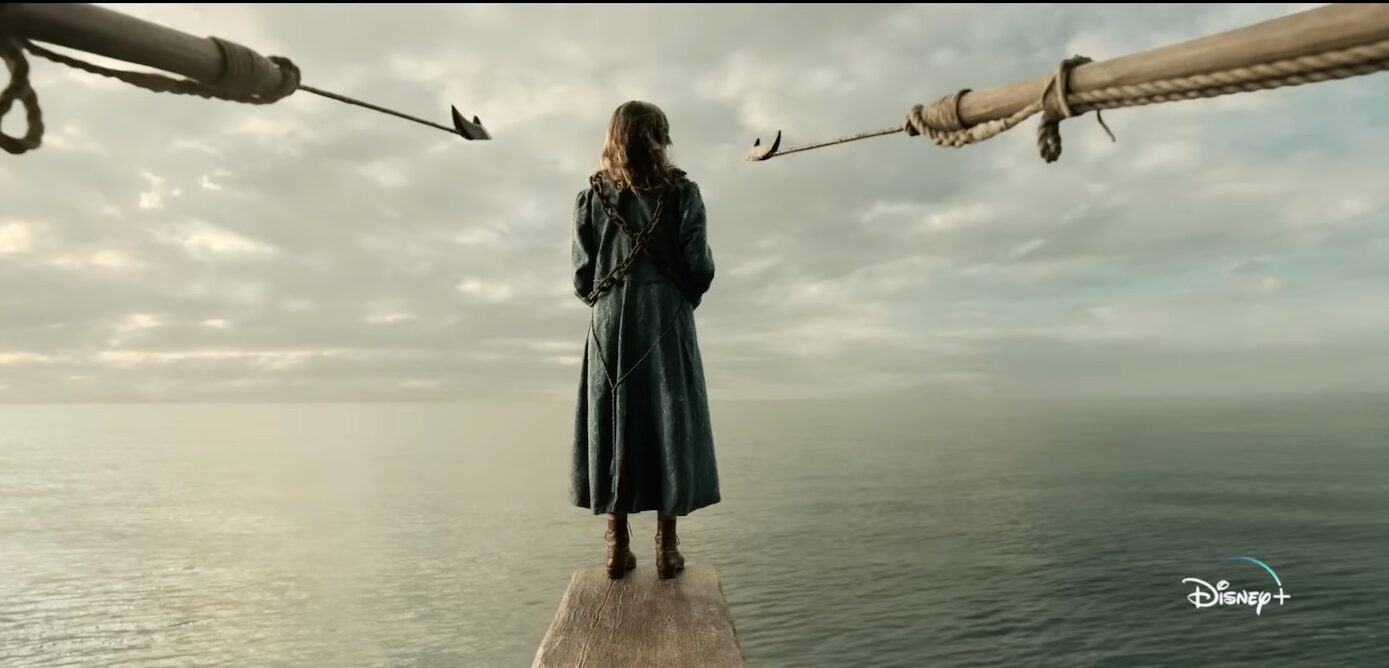
Beyond pros and cons...
There's a troublesome tonal weirdness to this thing that makes me frustrated while watching it and yet strangely compels me to watch it again. Lowery’s The Green Knight burned with such inspiration that it felt like we were witnessing a rare wonder: a filmmaker taking a substantial leap forward to fulfill his full potential, realizing all of his filmmaking dreams in one wild 140-minute rush. Here, something’s missing. It seems that he and his motley crew are bored by the same old Disney classic storyline, and, worse, held back from imagining and exploring new possibilities. A certain malaise hangs over the whole endeavor, a sense that everyone involved is coping with the loss of what might have been.
And yet, even Disney can’t erase all evidence of his vision. Lowery's ambitions are evident in the extravagant set design, the acrobatic aerial perspectives which often recall Malick’s “Holy Spirit with a GoPro” cinematography, and the over-edited action scenes which seize upon all the playful possibilities of a levitating pirate ship. While I never find myself caring about this Peter or this Wendy for a moment — in fact, I keep wishing they would wander off together and leave us with Smee, the Lost boys, and Tinkerbell — I would have happily moved through the enchanting aesthetics of this world in their unremarkable company for another hour.
I hope that whatever Lowery does next, he's free to explore with the energy, curiosity, and awe that made The Green Knight so compelling through multiple screenings. That film was so alive with inspiration that it seemed like he was always scrambling to keep up with new ideas. This one, though… it’s a beautiful ship, but it leaves us with a sinking feeling. Perhaps the studio pirates didn’t have enough respect for their captain. Perhaps they mutinied. Perhaps they took the wind out of its sails.
Kelly Fremon Craig gives us the perfect prelude to Barbie
[This review was originally published almost three months ago at Give Me Some Light on Substack. Subscribe, and you'll get these reviews while the movie is still brand new!]
Are you there, Kelly Fremon Craig?
It's me, a middle-aged man and a fan of your movies about teenagers.
Okay, that probably sounds unsettling, like maybe someone should put me on a watchlist. And I’m well-aware that I, as a 50-something male, am not the target audience for your films about teenage girls.
But as I teach creative writing to students just out of high school, students who are working through their own teen experiences in writing, I care very much about this genre. And your film The Edge of Seventeen remains for me, seven years after I first saw it, one of the gold-standard films about teenagers and families of teenagers. That movie stands strong alongside Greta Gerwig’s Lady Bird as an exceptional film in its genre for how it demonstrates such close attention to — and thus love for — young humans in uncertain and embarrassing stages of development. I still remember Nadine (the always-impressive Hailee Steinfeld) and her exasperation when she discovers that her brother is dating her best friend Krista (my first encounter with the radiant Haley Lu Richardson!) While that premise struck me as unremarkable in the genre of coming-of-age comedies, I was surprised and delighted by how quickly I found myself caring for your characters, by the depth and nuance of the performances; and by Woody Harrelson’s understated work (which remains my favorite big screen performance of his).
So I was there on opening weekend to see your adaptation of Judy Blume’s beloved story about Margaret.
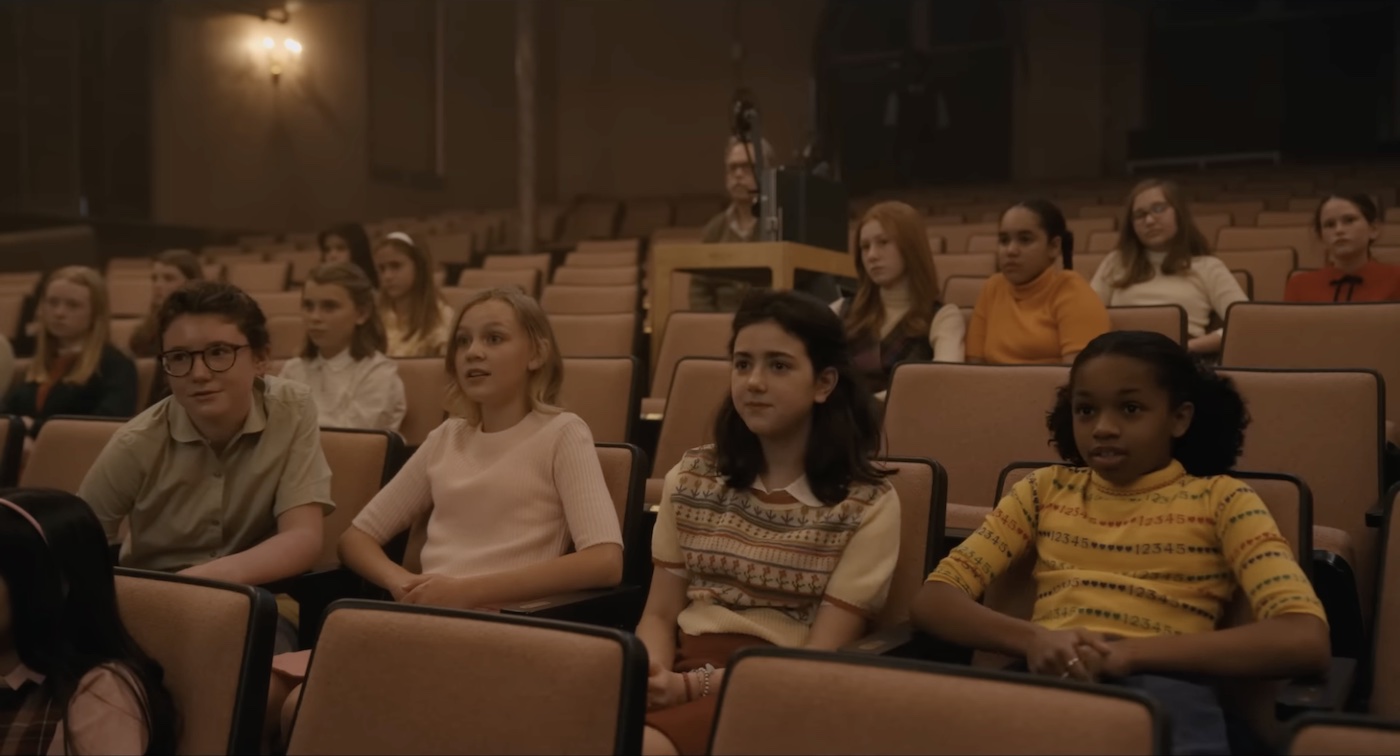
And sure enough, even though I’ve never been a sixth-grade girl, I found so much here that rang true. Like Margaret (whose spunk, awkwardness, and bewilderment are played to perfection by young Abby Ryder Fortson), I grew up with loving and faithful parents who came from families with entirely different kinds of engagement with religion. For Margaret, Dad (Benny Safdie, inspired casting!) is Jewish, and Mom (the effervescent Rachel McAdams) is a Christian. For me, both Dad and Mom were (and still are) evangelical Christians, and during my K–12 school years, invested in the development of my intellect and my faith. (Here’s to “mainstream” Christians who have confidence that the Truth will set them free, and who would never build walls of denial and antagonism against the world that they claim God “so loved.”)
You portray with such sensitivity and understanding the trouble that Margaret suffers as she gets caught in a tug-of-war between zealously religious grandparents, both eager to convert her to their tradition. I didn’t experience this in my family, but I did experience it in the world of Christian education, where I found myself torn between the so-called-“conservatives” (who were were obsessed with cultural dominance, morality checklists, and church-culture conformity, and seemed so often to be disgruntled), and so-called “liberals” (who seemed irresponsibly reckless, but who were appealing in their enthusiasm about imagination, diversity, and inclusion). I found myself recoiling instinctively from teachers who were hell-bent on indoctrinating me into what I now recognize as religious fundamentalism — and that’s quite similar to what Margaret is feeling when her Jewish paternal Grandmother Sylvia (played with effortless charisma by Katy Bates) and her evangelical maternal Grandma and Grandpa Hutchins (Mia Dillon and Gary Houston) meet on the battlefield for a claim on the poor girls’s soul.

I love that Margaret realizes that she can reject such programatic, control-freakish behavior and still carry on a meaningful dialogue with the Higher Power whose presence she can feel. (Is this a faithful representation of how Judy Blume handles this in the book? I hope so. It’s inspired.) And as she does, she’s on a trajectory toward love and inclusion, quite contrary to the circles of peer pressure who are preoccupied with forming exclusive clubs that have strict membership guidelines.
Like Margaret, I’ve never much doubted that there is a God, a Presence in the silence who pays loving attention, and who isn’t there to grant my wishes but to show me that “love is bigger than anything in its way.” (Thanks for that line, U2.) I drew confidence and consolation from the concept that God was gracious and benevolent; I never dreamed of throwing those teachings of Jesus out with the toxic bathwater of fundamentalism. I was drawn to (and, if you will, “saved” by) teachers who believed that God is Love, and Love respects the law but favors grace; God is Love, and Love is full of fearless intellectual curiosity; God is Love, and Love is Unconditional, embracing and learning from outcasts, and refusing to set up exclusionary membership standards.

Anyway — as you can see, while the movie explores so may of Margaret’s challenges (and those of her mother, too, in ways that make the film so much more substantial), I resonated with this particular thread of the story. I’ve never read Are You There, God? It’s Me, Margaret, even though it’s revered now as a classic work. I don’t remember the book being a topic of discussion amongst boys my age, but I was an avid reader, and I’m surprised that I didn’t move on to reading Judy Blume after growing up in the good imaginary company of Fern from Charlotte’s Web and Beezus and Ramona from Beverly Clearly. I missed out. Even though I was quite busy surviving my own confusing adolescence at the time, I think I would have found plenty about Margaret’s challenges — social, biological, theological — “relatable” and intriguing.

I never suffered a traumatic move from one city to another in my childhood, but I can imagine how it rattles poor Margaret when the family moves (despite Grandma Sylvia’s best efforts to stop them) from New York to New Jersey and she has to adapt to a new school, a new community of teens. But I can, of course, understand the alarmingly biological unrest of adolescence and its hormonal surges, the increasingly intriguing and terrifying world of sex, and the troubles of peer pressure. Who is Margaret supposed to become? Which religion will she embrace? When will she cross that threshold into womanhood? Which comes first—the bra or the bust? The pads or the period?
I can imagine that this movie might have been somewhat discomforting to me in middle school. The subjects of puberty and sexuality were treated as so secretive — and, frankly, so charged with the threats of shame and Divine judgment — that it would have been difficult for me to easily interpret this story. But now, as the happy uncle of more than a dozen amazing nieces, some of whom have now grown up and raising daughters of their own, I am ever so grateful that this book exists.
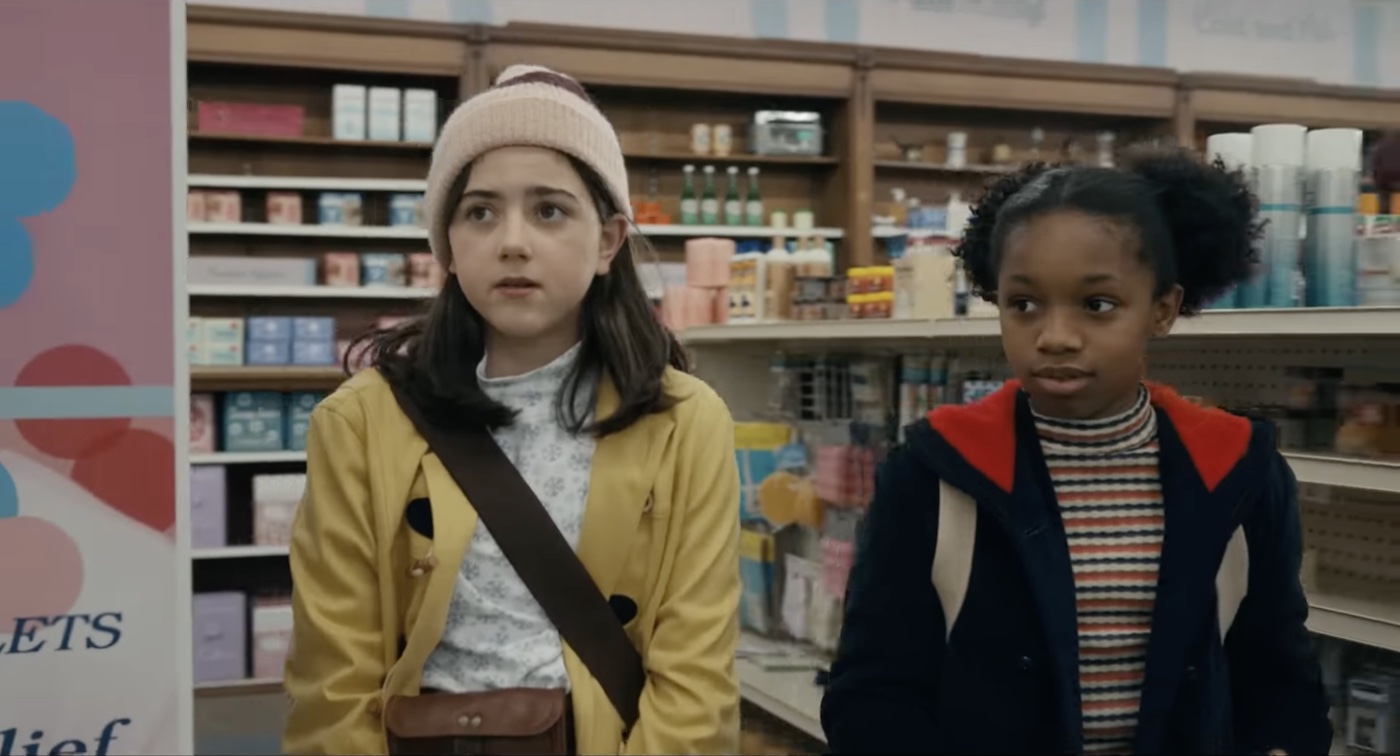
And speaking of awkward — I had no idea how uncomfortable I would be in this movie theater, realizing that I was that weirdo middle-aged man sitting alone in the back while about 25 girls (and a few scowling moms) filed in and saw me there. I wondered if maybe I should leave just so they could relax.
But then, something remarkable happened. As I was so quickly caught up in the joys of the movie, laughing heartily along with everyone else, a girl sitting all by herself at the end of the row kept glancing at me as if I was the subject of some kind of test. And then she began moving gradually down the row — a few seats at a time. I suspect she had reserved a seat just a few seats down from mine and had decided not to take any chances. But by two-thirds of the way through the film, she had noticed that I was laughing at the funny things and cringing at the cringe-y things. We started exchanging wide-eyed glances at the movie’s startling comic turns, as if surprised that we were finding the same things funny. Or maybe her intuition told her that movies like this are best as communal experiences — I don’t know. How would I know about what she was thinking? Anyway, it was a pleasant surprise to have something like company at what turns out to be a movie that should be shared by families and friends. (At least I feel confident that I passed one person’s “Creep Test.”)

Anyway, Kelly Fremon Craig, you deserve all the raves your movie is getting, and I hope you’ll take pleasure in the genuine enthusiasm that I heard about the film last night when I tuned in to NPR’s Pop Culture Happy Hour. I found this one of the most enjoyable episodes I’ve heard there in a while.
And, if no one has told you this yet, allow me: You would be the ideal director for films based on any of the YA novels by National Book Award finalist Sara Zarr. Trust me. I'd recommend The Lucy Variations or Once Was Lost or my favorite How to Save a Life.
Oh, and if you see Rachel McAdams, please pass this on to her: She’s always impressed me, but I'm realizing that she has slowly and steadily become one of the actresses I trust most in all of movies — across the years (sheesh, almost 20 years of great McAdams’ performances!) and across the genres, from Mean Girls to Slings & Arrows to State of Play… all the way to her adventure with Ben Affleck in the TMCU (Terrence Malick Cinematic Universe). I will watch anything she’s in at this point. Her performance as Barbara Simon is exceptional; she plays it without a hint of condescension or pandering to younger viewers. She helps make this as great a movie about parenting as it is a great movie about being a kid.
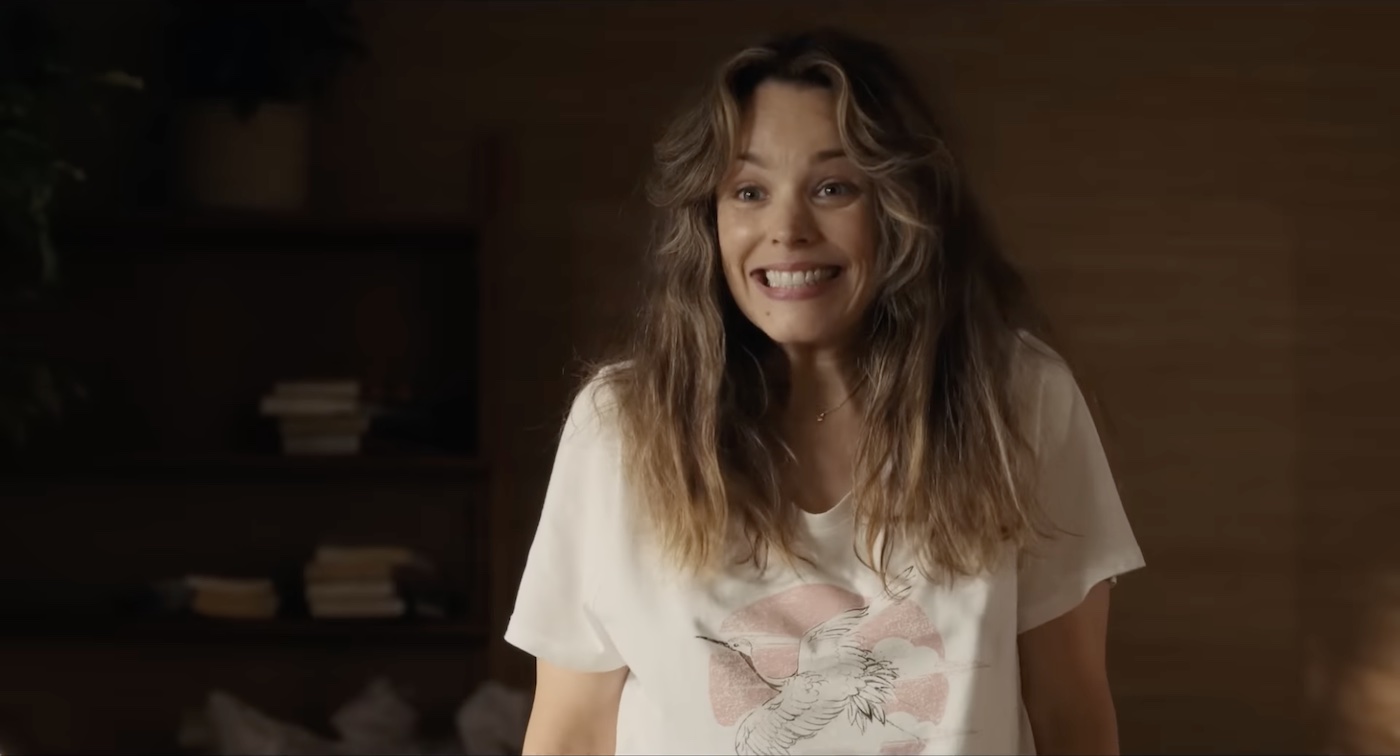
Speaking of Mean Girls, a movie with an outstanding ensemble of young talent, how unlikely is it that I come away with Are You There, God? It’s Me, Margaret impressed by all five of the girls with substantial roles? I'm curious to see whatever any of them do next. There isn't a kid in this movie who doesn't seem like a genuine human being to me, and that's rare.
If there is any character I want to spend more time with, though, it’s Margaret’s teacher Mr. Benedict, played with such warmth and nuance by Echo Kellum. Maybe he’s the most convenient connection for me, at my half-century mark. I want to be Mr. Benedict when I grow up — trustworthy, caring, and wise. I suspect that he’s going to be a role model for Margaret just as he is for me.
[This review was originally published almost three months ago at Give Me Some Light on Substack. Subscribe, and you'll get these reviews while the movie is still brand new!]
